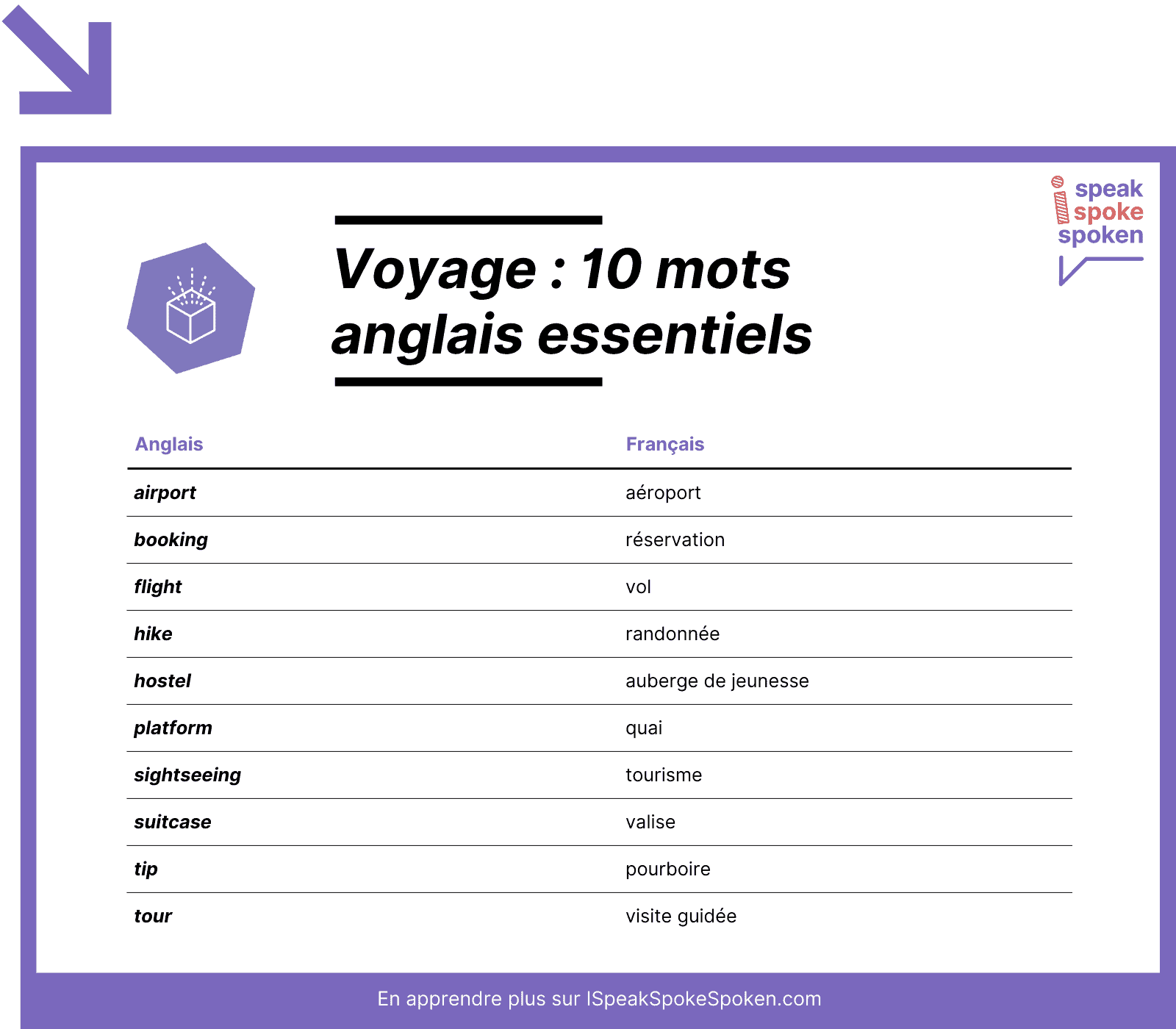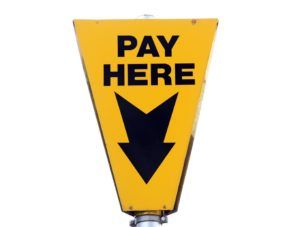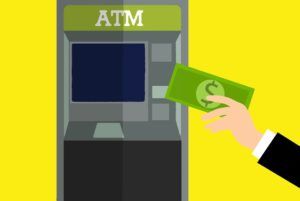- Index de section
- Actualités :
- Communauté :
- Liens & Logo
- Génériques :
- Administration :
- Règlement intérieur
- Associations Tolkien
- Activités :
- Evénement : JRRT 2023
- Par l'association :
- Assemblée Générale
- Rencontres du Serein
- Tolkien Reading Day
- Tolkien Week & Hobbit Day
- Organisation externe :
- Trolls et Légendes
- Sur les Terres de l'Unique
- Hors-série 4
- Hors-série 3
- Hors-série 2
- Hors-série 1
- Calendriers
- Par l'association
- Porte-clefs
- Marque-pages
- Les plateformes
- Spreadshirt
- Sur Tolkien FR
- Sur Tolkien VO
- Posters- Calendriers
- Prochaines parutions
- J. R. R. Tolkien :
- Biographie détaillée
- Courte biographie
- Études biographiques
- Traduction de Francis Ledoux
- Traduction de Daniel Lauzon
- Traduction de Pierre Alien
- Contes et légendes inachevés
- Le Livre des Contes perdus I
- Le Livre des Contes perdus II
- Les Lais du Beleriand
- La Formation de la Terre du Milieu
- La Route Perdue
- The Return of the Shadow
- The Treason of Isengard
- The War of the Ring
- La Défaite de Sauron
- L'Anneau de Morgoth
- The War of the Jewels
- The Peoples of Middle-earth
- Les Enfants de Húrin
- Beren et Lúthien
- La Chute de Gondolin
- The Nature of Middle-earth
- La Chute de Númenor
- La Légende de Sigurd et Gudrún
- La Chute d'Arthur
- Beowulf & Sellic Spell
- The Story of Kullervo
- Le Lai d'Aotrou et Itroun
- Livres audio en français
- Traductions de textes de Tolkien
- Droits sur les ouvrages
- Famille Tolkien :
- Biographies de la famille
- Christopher Tolkien
- Après Tolkien :
- En français
- Études bibliographiques
- Traduire Tolkien
- Saviez-vous
- Partenariat
- À propos des traductions françaises
- Recherche :
- Chronologique
- Le Silmarillion
- Catégories :
- Chants et récits
- Chronologie
- Âge des Arbres
- Premier Âge
- Deuxieme Âge
- Troisieme Âge
- Ponts et gués
- Liste des auteurs
- Sur Tolkiendil :
- Astronomie et calendriers
- Essais linguistiques
- Évolution du Légendaire
- Films & Jeux
- Idées et concepts
- Personnages
- Tolkien et la littérature
- Tolkien 1892-2012
- Colloques et conférences
- Travaux universitaires
- Commentaires
- Sur le net :
- Articles anglophones
- Articles francophones
- Autres langues
- Langues inventées :
- Langue des Valar
- Ancien quenya
- Eldarin commun
- Quendien primitif
- Telerin commun
- Vieux sindarin
- Gondorien antique
- Langues orientales du Premier Âge
- Gondolinien
- Ossiriandrin
- Langue du Nord
- Langues du Val d’Anduin
- Langues orientales
- Occidentalien
- Langue des Ents
- Langue des Araignées géantes
- Langue des Wargs
- Parler noir
- Ancien qenya
- Gondolindren
- Kornoldorin
- Mólanoldorin
- Noldorin de Mithrim
- Noldorin de Nargothrond
- Solosimpilin
- Toleresséen
- Systèmes d’écriture :
- Scriptorium
- Angloquenya
- Lettres de Junius
- Lettres gnomiques
- Runes anglaises
- Runes germaniques
- Runes gondoliniques
- Qenyatique 1929
- Skirditaila
- Essais & Utilitaires :
- Introduction aux langues de Tolkien
- Coutumes linguistiques
- Analyse des noms du Légendaire
- Utilisation des langues inventées
- Philosophie du langage
- Traductions des œuvres
- Commentaires, comptes-rendus & corrigenda
- Hors du Légendaire
- Miðgarðsmál
- Calligraphies
- Enluminures
- Bandes dessinées
- Couvertures
- Inclassables
- Le Seigneur des Anneaux
- Le Fermier Gilles de Ham
- Compositions :
- Traductions
- Acrostiches
- Illustrations
- Rire et sourire :
- Les Anneaux de Pouvoir
- Le Hobbit de P. Jackson
- Le Seigneur des Anneaux de P. Jackson
- Autres adaptations
- Photographies
- Concours de photos 2010
- La Compagnie du Dragon Vert
- Greisinger Museum
- Quiz sur Discord
- Mots croisés
- Mots-cachés
- Les Anagrammes
- Jeux sur le Forum
- Bienvenue à Minas Tirith
- Ultima Online Turambar
- Jeux de société
- Ultima Online
- Jeux à télécharger
- Jeux de construction
- Personnalisation :
- Sophie Bazé
- Jean-Jacques Chesnais
- Éric Faure-Brac
- Ted Nasmith
- Dino Perrone
- Sylvie Allard
- Angerthas et runes
- Divertissements :
- Julien Carbon
- Alexandre Philippe
- Page d'aide
- Best of chat

Bande-annonce
Fiche technique, bande originale, sur tolkiendil, le hobbit : un voyage inattendu.
Le Hobbit : Un Voyage inattendu ( Titre original : The Hobbit: An Unexpected Journey ), est la première partie de la trilogie de Peter Jackson : Le Hobbit .

« Le Hobbit : Un Voyage Inattendu, est le 1er volet d'une toute nouvelle trilogie consacrée à l'œuvre incontournable de J.R.R. Tolkien. Alors qu'il croise par hasard la route du magicien Gandalf le Gris, Bilbon rejoint une bande de 13 nains dont le chef n'est autre que le légendaire guerrier Thorin Écu-de-Chêne, afin de reprendre le Royaume perdu des Nains d'Erebor, conquis par le redoutable dragon Smaug. Leur périple les conduit au cœur du Pays Sauvage, où ils devront affronter des Gobelins, des Orques et des Araignées géantes et feront la connaissance d'un certain Necromancien… Sur le chemin, le modeste Bilbon Saquet se surprend à faire preuve d'un courage et d'une intelligence inattendus, et parvient à mettre la main sur le “précieux” anneau de Gollum lié au sort de la Terre du Milieu… »

(Informations spécifiques à Un Voyage inattendu . Voir la fiche générale pour plus d'informations).
- Titre original : The Hobbit: An Unexpected Journey
- Réalisateur : Peter Jackson
- Dates de tournage : Du 21 mars 2011 au 17 octobre 2011
- Sorties en salle : 28 novembre 2012 (Nouvelle-Zélande), 12 décembre 2012 (France)
- Budget : 180 000 000 $ (estimation)
- Box-office : 1 021 103 568 $
- Durée : 2h 49min - 3h02min (Version longue)
- Basé (globalement) sur les chapitres 1 à 6 du roman de J.R.R. Tolkien : Le Hobbit et les Appendices A et B du Seigneur des Anneaux (notamment le récit de la bataille d'Azanulbizar)
Afficher/cacher Les actrices et acteurs
- Lindir : Bret McKenzie
- Gollum : Andy Serkis
- Bolg : Conan Stevens
- Grand Gobelin : Barry Humphries
- Grinnah : Stephen Ure (Personnage inventé pour les besoins du film)
- Yazneg : John Rawls (Personnage inventé pour les besoins du film)
- Frodo Bessac : Elijah Wood
- Fredegar Boulot : Eric Vespe
- Vieux Gammidge : Stephen Gledhill
- Vieux Touque : Dan Hennah
- Thráin II jeune : Thomas Robins
- Thráin II : Michael Mizrahi
- Hubert : Mark Hadlow
- Léon : Peter Hambleton
- Tom : William Kircher
Afficher/cacher Les récompenses
- Le Hobbit : Un Voyage inattendu a remportée 10 récompenses, pour un total de 83 nominations, entre 2012 et 2014.

- My Dear Frodo
- Old Friends (Extended version)
- An Unexpected Party (Extended version)
- Blunt the Knives – (Paroles de J.R.R. Tolkien, musique de Stephen Gallagher, interprétée par The Dwarf Cast)
- Axe or Sword?
- Misty Mountains – (Paroles de J.R.R. Tolkien, musique de Plan 9 (David Donaldson, David Long, Janet Roddick & Steve Roche), interprétée par Richard Armitage & The Dwarf Cast)
- The Adventure Begins
- The World is Ahead
- An Ancient Enemy
- Radagast the Brown (Extended version)
- The Trollshaws
- Roast Mutton (Extended version)
- A Troll-hoard
- The Hill of Sorcery
- Warg-scouts
Afficher/cacher Le disque 2
- The Hidden Valley
- Moon Runes (Extended version)
- The Defiler
- White Council (Extended version)
- A Thunder Battle
- Riddles in the Dark
- Brass Buttons
- Out of the Frying-Pan
- A Good Omen
- Song of the Lonely Mountain (Extended version) – (Parole et interprétation de Neil Finn, musique de Plan 9)
- Dreaming of Bag End
- A Very Respectable Hobbit
- The Dwarf Lords
- The Edge of the Wild
- The Valley of Imladris - (Composée par Howard Shore)
- Torture Song - (Paroles de Philippa Boyens & Fran Walsh, musique de Steve Gallagher, interprétée par Barry Humphries)
- Bag End - Composée par Howard Shore
- Flaming Red Hair - (Composition et interprétation par Plan 9)
- Man in the Moon - (Composition et interprétation par James Nesbitt)
- Goblin-Town - (Composée par Philippa Boyens, Fran Walsh & Stephen Gallagher, interprétée par Barry Humphries)
- Merry Inn - (Paroles de J.R.R. Tolkien, interprétée par The Dwarf Cast)
- J.R.R. Tolkien : Le Hobbit (The Hobbit) .
- Essais : Films & Jeux .
- Le Hobbit : La désolation de Smaug .
- Le Hobbit : La bataille des cinq armées .
- The Hobbit - Jules BASS et Arthur RANKIN Jr. .
- Donnez votre avis sur le Forum .
- Le site officiel du film (en anglais) .
- Le blog officiel du film (en anglais) .
- La fiche IMDB (en anglais) .
- La fiche Allociné .

- Actualité Films
Le Hobbit : Un voyage inattendu - critique qui part à l'aventure
Après Le Seigneur des Anneaux , Peter Jackson replonge en Terre du Milieu avec une nouvelle trilogie consacrée à Bilbon Sacquet, joué par Martin Freeman , dont voici le premier opus : Le Hobbit : Un voyage inattendu.

UN FILM SACQUET ?
À l’annonce que Peter Jackson adapterait Bilbon le Hobbit en trois films de plus de deux heures chacun, nombreux sont ceux, des critiques jusqu’aux fans de Tolkien les plus convaincus, qui avaient pris peur. Finie la petite polémique de techniciens sur la viabilité d’un film tourné en 48 images par secondes, tout le monde se demandait surtout comment le metteur en scène, connu pour sa boulimie visuelle, allait transposer un conte pour enfants limité à un peu plus de 300 pages en une saga fleuve qui allait se dérouler sur 3 ans tout en évitant soigneusement de transformer un patrimoine culturel en projet cinématographique aux envies bassement mercantiles.

Le nouveau découpage des films, reléguant la première partie à un long film d’introduction débarrassé des réels morceaux de bravoure du livre, n’avait rien non plus pour rassurer. Le produit final, construit sur un succès depuis longtemps acquis, ne cherche bien évidemment pas à départager l’un ou l’autre des deux camps : le public néophyte risquera fort de rester sceptique à la fin du film tandis que les fans de la première saga ne pourront que s’incliner devant la majestuosité de certaines séquences. Car oui, en l’état, ce premier segment du Hobbit sent bon le remake du Seigneur des Anneaux au travers de ses péripéties et de ses personnages. Mais nom d’une pipe de Hobbit, quel remake !

UN HOBBIT PRENANT
Neuf ans après la fin du Retour du Roi , Peter Jackson et son équipe semblent avoir pris toute la mesure de ce qui fait la poésie cinématographique de l’univers de Tolkien et l’injecte toute entière dans ce premier film qui force le respect par son ambition et les moyens déployés dans chaque scène. Tout d’abord visuellement, l’avancée technologique aidant, Le Hobbit : Un voyage inattendu surpasse à de nombreux moments la trilogie de l’Anneau.
Oubliés, les bons matte paintings un peu vieillis dans la saga originelle, chaque effet visuel de ce nouveau voyage est à tomber et nous assène une claque à chaque plan : des retrouvailles avec les Hobbits de la Comté (les clins d’oeil à la saga bien connue font mouche) jusqu’aux explorations de repères souterrains envahis par des gobelins, en passant par les randonnées arides de la compagnie des Nains au milieu de montagnes littéralement vivantes, il y a bien lieu de s'extasier.

Un spectacle de chaque instant aidé par une mise en scène qui a résolument gagné en maturité depuis que Peter Jackson s'est fait la main sur une autre super-production, King Kong . Si on pouvait craindre que le barbu néo-zélandais renoue avec ses éternelles envolées de caméra à travers les multiples décors en maquette, empêchant parfois le spectateur de bien appréhender l’univers du film, il n’en est rien. Le cinéaste semble plus posé et prend plus à cœur d’entraîner le spectateur dans cet univers qu’il affectionne tant.
À ce titre, la course poursuite des nains dans de longs tunnels souterrains infestés de gobelins se révèle être un véritable jeu de plate-forme prenant vie sous nos yeux et renouvelle de bien belle façon le plaisir éprouvé devant la séquence des mines de la Moria dans La Communauté de l’Anneau . Plus de dix ans après avoir redonné ses lettres de noblesse à l’héroïc-fantasy au cinéma, Peter Jackson montre qu’il reste un maître dans le genre et n'a de cesse, ici, d'en remontrer à tous les réalisateurs qui ont tenté de le copier.

GANDALF ET LES TREIZE NAINS
Une immersion en terre du milieu aidée par un bestiaire de plus en plus travaillé et enfin, réellement incarné. Le premier exploit du film est bien de nous rendre complètement attachants les treize nains héros du film. Des personnages travaillés, servis par un casting visiblement conquis par la passion du réalisateur , de Martin Freeman dans le rôle titre, qui assure avec brio la transition avec le jeu de Ian Holm tout en apportant son flegme so british , à Richard Armitage en chef des nains, qui apporte tout son charisme à ce héros déchu.
Peter Jackson utilise ainsi à bon escient une structure narrative plus légère que la saga phare de Tolkien pour mieux prendre le temps de développer ses héros et exploiter toute leur évolution dramatique.

Et c’est bien là que les scénaristes ont trouvé toute la parade pour justifier la mise en place de cette nouvelle saga fleuve. En parallèle du récit principal, ils en profitent pour élaborer une menace plus grande et assurer ainsi la transition avec le récit majeur de la guerre de l’Anneau. L’orque Azog par exemple, dès cette première partie, offre une réelle menace. Jackson et ses scénaristes, en piochant avec intelligence dans la mythologie foisonnante créée par Tolkien, offrent une vision prometteuse de l’univers de l’auteur transposé au cinéma.
On pourra juste ergoter sur le caméo un peu longuet d’Elijah Wood (pas du tout raccord avec ses dix ans de plus) ainsi que sur l’apparition intempestive d’un magicien visiblement sous LSD, même si ces éléments ne font qu’égayer le folklore Tolkiennien.

Les éternels détracteurs de l’épopée trouveront toujours de quoi râler, mais par leur ambition, Peter Jackson et son équipe ont trouvé de quoi magnifier un conte pour enfants et lui donner un souffle épique et une ampleur qui se retrouvent dans chaque scène. Si ce voyage était inattendu pour ce bougre de Bilbon, il risque fort bien de ne pas l'être pour les aficionados du Seigneur des anneaux .
Vous n'êtes pas d'accord avec nous ? Raison de plus pour vous abonner ! Je soutiens la liberté critique
Votre note ?

Bonjour Personnellement l histoire est super, très bon sujet En revanche il m'a quand même ennuyé je pense que c'est pour la raison que tout le film parle du voyage il y a pas d action et peut être qu'il aurait fallu enlever quelques moments et le faire durer moins de 3h
La trilogie des hobbit se regarde mais en terme de réussite, c'est à mille lieux de la première trilogie du seigneur des anneaux. Vouloir étirer sur trois films le livre rien que pour le pognon a été la plus grosse erreur qu'ils auraient pu faire (en terme artistique pas en terme financier bien sur). Le livre initial est un livre pour enfant beaucoup moins dense que le seigneur des anneaux. Ils auraient du se borner de faire un seul film épique qui suivait "Bilbo le Hobbit" en y mettant peut-être un peu plus de maturité mais sans faire tout ces ajouts artificiels simplement pour rallonger la sauce.

Un soir, je me suis dit : "Allez zou, c'est aujourd'hui que je regarde le Hobbit !". Je me suis bien calé dans le canapé, j'ai lancé le film et je me suis plongé dans cette grande aventure. Une heure plus tard, je me suis levé sur un prétexte quelconque et j'ai sans doute trouvé mieux à faire, - fixer l'intérieur de mon frigo d'un regard vide ou récurer mon four, je ne sais plus - je n'y suis pas retourné ! Cette épreuve !

La seule chose que je ne partage pas vraiment avec la critique de Damien Virgitti est le fait qu'Un voyage inattendu surpasse techniquement à de nombreux moments la trilogie de l’Anneau. Je préfère mille fois les décors réels du SdA que tous ces CGI du Hobbit. Mais en dehors de ça, et malgré la trop grande longueur du film dans sa première partie (la fête des nains), je fais partie de ceux qui ont aimé ce film (et cette trilogie) et qui adorent les six films de la saga dans son ensemble. J'aime la cohérence visuelle de la saga (alors que Guillermo del Toro voulait quelque chose de très différent) qui fait que le passage d'une trilogie à l'autre nous donne vraiment l'impression qu'on est toujours dans le même univers (là où la prélogie Star Wars était trop en décalage techniquement avec la trilogie originale, par exemple). J'aime l'interprétation de Martin Freeman et de Richard Armitage. Et j'aime le fait que le côté épique de la saga aille grandissant du Voyage inattendu jusqu'au Retour du Roi. C'est le principal handicap avec lequel partait cette nouvelle trilogie, à mon avis. Car forcément, le public attend d'un film qu'il soit plus épique que les précédents. Mais ici si les Hobbits avaient été plus épiques que le SdA, ça aurait gâché toute la trilogie SdA. De mon point de vue, aujourd'hui il faut découvrir les six films non pas dans leur ordre de production, mais dans l'ordre chronologique de l'histoire. C'est ainsi que je les ai fait découvrir à mes enfants. J'ai toujours une large préférence pour la trilogie SdA par rapport au Hobbit, mais ça ne fait pas pour autant de la trilogie "préquelle" de mauvais films. J'aime ces six films dans leur ensemble.

Le visionnage de ce 1er volet à été un enfer à visionner lors de ma séance ciné et le second a été pire encore
« Toi qui entre dans l’univers du Hobbit, abandonne tout cynisme! » Il le faut bien avec une histoire d’Héroïc Fantasy « classique ». Qui plus est si Peter Jackson cède, comme George Lucas avant lui, au son du « c’était mieux avant », avec une ambiance colorée et joyeuse, pas de morts dramatiques et de mini giclées de sang noirs d’Orcs. À la limite pour un premier volet, OK. Mais sa construction reprenant 6 chapitres de l’original apparaît alors comme mécanique, ces chapitres étant comme des épisodes presque indépendants qui s’enchaînent avec une certaine régularité, et de manière très localisée. Là c’est le moment des nains, donc dans 30 minutes ça va être les Trolls, puis dans autres 30 minutes les Géants de pierre etc… Comme ces mêmes chapitres se décrivent de manière relativement simples, c’est à dire plus portés par la narration qu’autre chose, la caractérisation des personnages devient inexistante sauf à l’interprétation personnelle du lecteur. En rajoutant cette caractérisation directement dans le film, Peter Jackson permet d’allonger ces différentes épreuves, mais tout en donnant plus de « chair » aux héros, voilà l’intérêt. Après il faut voir si cela s’adresse plus aux fans ayant déjà lu le bouquin, ou juste pour pouvoir retenir le public et les critiques avec des héros qui ne seraient pas de simples pantins aux ordres de leur mogul filmique… comme Lucas dans sa Prélogie en fin de compte. Surtout avec une structure assez similaire au film "La Communauté de l’Anneau": plusieurs films en un, un héros très passif au début, un autre plus valeureux, un sage, des faire-valoirs souvent comiques, des très méchants monstrueux… la base d’une histoire d’aventure classique semble bien immuable. Bien bon (Bilbon?) divertissement avec, pour le début, bien peu d’enjeux.
le livre est très ennuyeux a quoi sert ce blog ? sérieusement. tout le monde dit la même chose Pour moi, c'est surtout Orlando Bloom et Ian McKellen qui choquent, faisant beaucoup plus vieux dans ce film que dans la trilogie du LOTR, sans compter le changement de couleur d'yeux pour Orlando Bloom. Mais ça reste plaisant à regarder, même si personnellement je trouve les décors et la musique beaucoup moins intéressants que dans la trilogie du LOTR. Très déçu par cette trilogie qui est bien loin de LOTR. Le 1ere est tout juste passable, le 2ème bien mieux et le 3ène interminable ... Voila ce qui arrive qd on adapte aux forceps un livre pr enfants de 100 pages... C''est comme si tout le SDA fut adapter en un film unique d'1h30. Grand fan de LOTR (dans mon top 10 de tous les temps) cette trilogie est tout de même un sacré cran en dessous, néanmoins cela reste le haut du panier parmi les blockbusters de la même époque et même depuis... D'accord avec Patman, la musique, si puissante, inoubliable dans LOTR, est insignifiante ou presque dans le Hobbit. Cette trilogie en versions longues se laissent toujours bien regarder et gagne même une certaine patine atténuant, un peu, la distance avec sa glorieuse ainée cinématographique. Seul passage que j’ai détesté c’est avec les 3 trolls je trouve d’un ennui cette partie du film et mon second reproche c’est le nain qui tombe love de l’elfe, par ailleurs elle même je trouve c’est 2 personnages bidon qui nous soual tout le long du film sans sa j’ai bien aimer certes LSDA reste très très loins devant le Hobbit C'est du fan service de 3h ... avec une partie musicale qui sort de nulle part, un rythme incroyablement long ! On sent le scénario rallongé à l'extrême pour pouvoir faire 3 films ... C'est mercantile au possible et donc vide de toute magie. "On pourra juste ergoter sur le caméo un peu longuet d’Elijah Wood (pas du tout raccord avec ses dix ans de plus)" Une trilogie globalement très en dessous de LOTR. Et que dire de ce premier épisode interminable ? 90% du film étant du remplissage et du fan service gratuit (quasiment 15 mn pour voir le titre du film ...) Sans compter la colorimétrie dégueulasse & ce plan sur l'oeil du dragon à la fin
je déconne je parle très bien français
moi ne parle pas bien francai
what a f**** is happening there

Kit complet
28 jours chrono pour transformer votre anglais.
28 jours chrono pour transformer votre anglais
32 pages illustrées. Gratuit. Disponible immédiatement.
Le vocabulaire anglais du voyage : transports, hébergement, activités
Mis à jour le 15 décembre 2023
Il existe plusieurs manières de traduire le mot français “voyage” dans la langue de Shakespeare : journey , trip , voire même voyage (avec l’accent) !
Dans cette fiche de vocabulaire anglais , penchons-nous sur les transports, l’hébergement, les restaurants et les activités, ainsi que sur quelques expressions idiomatiques liées au voyage.
Avec, en bonus, des vidéos et des phrases pré-mâchées à employer pendant votre prochaine escapade à l’étranger…
Table des matières →

Télécharger la fiche-mémo en PDF.
Le vocabulaire anglais du voyage.
Hébergement
Restaurants et nourriture, activités et attractions.

Expressions idiomatiques liées au voyage
Bonus : 10 phrases à utiliser pendant votre voyage.
Fraîchement arrivé(e) à Londres, New York ou Sydney ? Voici 10 phrases qui vous aideront à faire vos premiers pas sur place !
Les mots du voyage en vidéo

Télécharger ce cours en PDF
Nos autres fiches de vocabulaire sur des sujets liés.
- Le vocabulaire anglais de la location de voiture
- Le vocabulaire anglais de l’hôtellerie
- Le vocabulaire anglais de l’environnement
Ce cours vous a aidé ? Partagez votre avis !

Ce cours d'anglais a été créé par Adrien
Diplômé d’une licence de langues étrangères en anglais et allemand, polyglotte (français, anglais, russe et allemand), Adrien a créé plus de 1500 cours d'anglais accessibles sur la chaîne YouTube de ISpeakSpokeSpoken.
Ses formations en e-learning comme Parlez Anglais en 60 Jours ont déjà été suivies par plus de 10 000 étudiants. Sa philosophie ? Tout le monde peut parler anglais à l'aide d'un bon formateur, un fil conducteur et l’occasion de pratiquer.
C’est pourquoi, il consacre la plus grande partie de ses journées depuis 2016 à développer la communauté et le contenu ISpeakSpokeSpoken. Que ça soit la leçon que vous venez de lire, une vidéo de la chaîne YouTube, une formation en e-learning ou encore l’Académie ISpeakSpokeSpoken vous avez toutes les cartes en main pour parler anglais !
Découvrir Adrien Jourdan
31 réflexions au sujet de “Le vocabulaire anglais du voyage : transports, hébergement, activités ”
Je vous remercie Adrien, j’ai beaucoup de plaisir à travailler avec vous et me remémorer des choses que j’avais plus ou moins oubliées;
Hello Rose,
Je suis ravi que vous y preniez plaisir.
Keep up the good work!
C’est de l’anglais vraiment
Je trouve vos techniques justes simples et efficaces , continuez ainsi 😊 Je rêverais d’être billingue mais la motivation et la patience manques …
Hello Cherazade,
Merci pour ton message.
Je te conseille de commencer par de petits objectifs, pourquoi pas 5 minutes par jour et d’augmenter progressivement. Mets-toi un objectif en lien avec un sujet qui t’intéresse, ça pourra t’aider à te motiver !
Have a nice day.
J’APPRECIS PARFAITEMENT LA MATIERE VUES DONNÉE PAR L’AUTEUR.C’EST VRAIMENT COOL.
Thank you very much!
Merci ADRIEN grâce a toi j aime plus l anglais maintenant
Heureux que tu y aies pris goût !
Laisser un commentaire Annuler la réponse
Commentaire
Apprendre l'anglais
Débuter en anglais
Tests de niveau
Méthodes d'anglais
Expression écrite
Expression orale
Les formations
Formations CPF
Conjugaison
Auxiliaires
Tableaux de conjugaison
Concordance des temps
Liste des verbes irréguliers
Les nombres
L'orthographe
Difficultés
Vocabulaire
Listes de fréquence
Vocabulaire de base
Vocabulaire général
Vocabulaire professionnel
Vocabulaire du voyage
ISpeakSpokeSpoken
Adrien Jourdan
Témoignages
Liens utiles
Index des cours
Se connecter
ISpeakSpokeSpoken est situé à Tallinn, en Estonie (Vesivärava tänav 50-201)
Mentions légales
Conditions générales de vente
Confidentialité
Copyright 2024 - Tous droits réservés | ISpeakSpokeSpoken | Have fun learning English!
- Complètement gratuit.
- 37 pages illustrées.
- Disponible immédiatement.

Quel est votre votre VRAI niveau en anglais: le test
Le plan précis pour parler anglais dans les semaines qui viennent

Comment ENFIN parler ET comprendre l’anglais sans bloquer ni chercher vos mots

- Cambridge Dictionary +Plus
- Déconnexion
Traduction de inattendu – dictionnaire français-anglais
(Traduction de inattendu depuis le Dictionnaire GLOBAL français-anglais © 2018 K Dictionaries Ltd)
Traduction de inattendu | Dictionnaire PASSWORD français-anglais
(Traduction de inattendu depuis le Dictionnaire PASSWORD français-anglais © 2014 K Dictionaries Ltd)
Exemples de inattendu

Mot du jour
not a living soul

Hidden in plain sight: words and phrases connected with hiding

Nouveaux mots
En apprendre plus avec +Plus
- Récent et Recommandé {{#preferredDictionaries}} {{name}} {{/preferredDictionaries}}
- Définitions Explications claires de l'anglais naturel écrit et parlé anglais dictionnaire des apprenants anglais britannique essentiel anglais américain essentiel
- Grammaire et Dictionnaire des synonymes Explications des usages de l'anglais naturel écrit et parlé grammaire synonymes et antonymes
- Pronunciation British and American pronunciations with audio English Pronunciation
- anglais-chinois (simplifié) Chinese (Simplified)–English
- anglais-chinois (traditionnel) Chinese (Traditional)–English
- anglais-néerlandais néerlandais-anglais
- anglais-français français-anglais
- anglais-allemand allemand-anglais
- anglais-indonésien indonésien-anglais
- anglais-italien italien-anglais
- anglais-japonais japonais-anglais
- anglais-norvégien norvégien-anglais
- anglais-polonais polonais-anglais
- anglais-portugais portugais-anglais
- anglais-espagnol espagnol-anglais
- English–Swedish Swedish–English
- Dictionary +Plus Listes de mots
- GLOBAL français-anglais Adjective
- PASSWORD français-anglais Adjective
- Toutes les traductions
To add inattendu to a word list please sign up or log in.
Ajoutez inattendu à une de vos listes ci-dessous, ou créez une nouvelle liste.
{{message}}
Il y a eu un problème.
Votre commentaire n'a pas pu être envoyé dû à un problème.
English translation of 'inattendu'

Examples of 'inattendu' in a sentence inattendu
Trends of inattendu
View usage for: All Years Last 10 years Last 50 years Last 100 years Last 300 years
Browse alphabetically inattendu
- inassimilable
- inattaquable
- inattentif à
- inattention
- All FRENCH words that begin with 'I'
Related terms of inattendu
- effet inattendu
- endroit inattendu
- invité inattendu
- résultat inattendu
- succès inattendu
- View more related words
Quick word challenge
Quiz Review
Score: 0 / 5

Wordle Helper

Scrabble Tools

Cherchez-vous un sujet en particulier ?
- AUTRES CONSEILS
- COMPORTEMENT
- ACTIVITES EXTRASCOLAIRES
LANGUES ETRANGERES
Ou lire un de nos articles les plus populaires ?
Les 12 avantages et inconvénients majeurs des réseaux sociaux.
- Dorian Mauro
- 28 janvier 2022
Comment rédiger un essai parfait ?
- Antoine Parat
- 1 octobre 2021
Liste des 52 verbes irréguliers en anglais à connaître (PDF)
Les 50 phrases en anglais utiles pour voyager.
- août 25, 2022

conseils pour les parents
Inscrivez-vous pour un cours d'essai gratuit @GoStudent
Guide gratuit pour motiver et accompagner votre enfant vers le succès scolaire.
Réservez dès maintenant
- Le vocabulaire anglais pour préparer son voyage
- Les phrases anglaises utiles pour se présenter en voyage en anglais
- Les moyens de transport en voyage en anglais
- Les expressions pour demander des renseignements en voyage en anglais
- Les expressions des destinations de voyage en anglais
Chaque année, des millions de français quittent la France à la découverte de nouvelles cultures. Parmi ces voyageurs, de plus en plus d’entre eux visitent des pays anglophones comme les États-Unis , le Royaume-Uni et l’Australie. Si vous faites partie de ces français qui s’apprêtent à découvrir la Statue de la Liberté ou à voir Big Ben pour la première fois, nous avons mis au point ce léger rappel sur le vocabulaire anglais autour du voyage.
Voici les 50 phrases et expressions les plus utiles en anglais , indispensables à connaître avant votre prochain voyage.
.jpg?width=1200&name=visit-travel-english%20(2).jpg)
1 - Le vocabulaire anglais pour préparer son voyage
Que vous fassiez le choix de voyager en avion ou en train, vous vous devez de connaître les termes basiques de vocabulaire lié au voyage en anglais.
2 - Les phrases anglaises utiles pour se présenter en voyage en anglais
Afin de faire connaissance avec les locaux, vous devez être en mesure de savoir prononcer ces quelques phrases utiles en anglais.
3 - Les moyens de transport en voyage en anglais
Une fois sur place, vous vous devez de savoir nommer les moyens de locomotion pour visiter la ville et ressentir les bénéfices du voyage .
4 - Les expressions pour demander des renseignements en voyage en anglais
Lorsque l’on parle peu la langue, il est difficile d’ oser s’exprimer en voyage . Pas de panique, grâce à ces quelques expressions vous serez en mesure de mieux maîtriser la langue afin de vous exprimer avec les locaux.
5 - Les expressions des destinations de voyage en anglais
Si vous souhaitez améliorer votre vocabulaire afin de mieux vous exprimer en anglais, voici les expressions à savoir pour décrire où vous allez en voyage.
Vous vous apprêtez à partir dans un pays anglophone et vous jugez votre niveau d’anglais insuffisant ? Faites appel à un professeur particulier de chez GoStudent et faites remonter votre niveau en flèche à travers des cours d’anglais sur mesure.
Vous souhaitez essayer les cours particuliers pour votre enfant ? Réservez une leçon d'essai gratuite avec nos meilleurs professeurs.

Meilleurs articles

- Par Dorian Mauro
- Dans AUTRES CONSEILS

- Par Antoine Parat
- Dans FRANCAIS ET PHILOSOPHIE

- Par Manon Stas
- Dans LANGUES ETRANGERES , RESSOURCES PEDAGOGIQUES (gratuit)

Comment être sûr d’être élu délégué de classe (discours, slogan, affiche) ?
- Dans AUTRES CONSEILS , À LA UNE

Tout savoir sur la crise des 7 ans
- Par Camille Robinson
- Dans COMPORTEMENT
Articles similaires

Les 50 phrasal verbs en anglais à connaître absolument
- Par Pauline Foret
- septembre 6, 2022

Comment écrire un email en anglais ?
- Par Natacha Fialin
- août 19, 2022

Toutes les astuces pour devenir le professeur particulier parfait ?
- août 11, 2022
Réservez une leçon d'essai gratuite
Réservez une leçon d'essai gratuite., inscrivez-vous pour votre leçon de soutien scolaire gratuite..
Le Hobbit : un voyage inattendu : Critique presse
Le parisien, télé 7 jours, l'ecran fantastique, l'express, les fiches du cinéma, critikat.com, ecran large, le journal du dimanche, paris match, cahiers du cinéma, l'humanité, les inrockuptibles, télécinéobs.
Chaque magazine ou journal ayant son propre système de notation, toutes les notes attribuées sont remises au barême de AlloCiné, de 1 à 5 étoiles. Retrouvez plus d'infos sur notre page Revue de presse pour en savoir plus.
Splendeur visuelle peuplée de créatures et de décors époustouflants, prouesse technique autant que film d'atmosphère en parfaite cohésion avec les précédents.
Adoptant un ton plus léger, ce premier volet regorge de créatures fabuleuses, de décors grandioses et de scènes épiques.
"Le Hobbit: un voyage inattendu" est de toute beauté.
Voir sur le site Studio Ciné Live.
Malgré les quelques fausses notes de ce nouveau film, premier d'une nouvelle trilogie, "Le Hobbit : un voyage inattendu" ravira quand même les adeptes du genre.
D'un point de vue purement artistique, on frôle donc le sans-faute. Hélas, difficile d'en dire autant du scénario.
La magie est trop belle et le frisson trop délicieux pour ne pas se laisser envoûter.
Voir le site de l'Express.
"Toute bonne histoire mérite qu'on l'embellisse" : cette leçon de Gandalf à Bilbon n'est guère tombée dans l'oreille de sourds.
Peter Jackson, capitaine d'industrie et faiseur doué, orchestre avec brio ce spectacle brillant. Seul absent, porté disparu quelque part en Terre du Milieu : Peter Jackson, l'auteur.
Spectaculaire, foisonnant, gavé d'effets visuels stupéfiants, "Le Hobbit" ne dépaysera pas les fans du "Seigneurs des anneaux".
A deux titres, "The Hobbit" est un retour, la vision de simples débuts portée par le regret de paradis perdus, qui s'adresse à l'éternel enfant en chacun de nous.
Peter Jackson reste l'un des grands conteurs du septième art et sa nouvelle trilogie porte toutes les promesses d'un nouvel enchantement majeur.
L'adaptation de Peter Jackson se trouve tiraillée entre ses appels d'air vers l'élan homérique et mystique du "Seigneur des Anneaux" et l'abondance frénétique du conte (car c'en est un) de Tolkien.
CONTRE : Une logorrhée verbeuse dont la forme peu imaginative renvoie à un cinéma de l'immobilisme et de l'insignifiant qui même en 48 images par seconde confine à une forme de conservatisme faisant finalement froid dans le dos.
POUR : Avec ce remake à peine caché de sa célèbre trilogie, Peter Jackson magnifie un conte pour enfants de quelques pages à travers un spectacle visuel de tous les instants à la mise en scène de plus en plus maîtrisée.
Optant pour un ton plus léger, avec une bonne dose d'humour véhiculé par le héros (excellent Martin Freeman), le film enchaîne les batailles dans des décors naturels vertigineux (...) Si Peter Jackson se repose sur ses acquis (...) il démontre qu'il n'a pas perdu la main.
Pour le reste, chacun semble rivé à sa place : qu'il s'agisse des acteurs, de la technique ou du compositeur Howard Shore, les partitions sont professionnelles et efficaces, pas forcément inspirées.
Mais pour quelques scènes qui ressuscitent l'esprit de la première trilogie, il faut supporter 2h45 de spectacle qui n'a plus rien d'inédit.
Il serait injuste de bouder ces retrouvailles avec une mythologie familière. Dès que la quête commence vraiment, les morceaux de bravoure abondent.
Jackson ne fait qu'enchaîner des scènes platement illustratives comme on débiterait du boudin.
Ce qui frappe devant "Le Hobbit", c'est la proportion exacte entre l'énormité du faste et l'énormité du vide. Et il n'est pas interdit de voir cet immense dragon numérique endormi sous des monceaux de pièces d'or, comme un possible résumé du film : une dépense en pure perte, du vide monstrueux recouvert de sous.
Un défilé permanent de gargouilles et un filmage dégoulinant, que ne compense pas une mécanique guerrière archi déjà vue. À ne pas suivre.
Une machine puissante, sinon dévastatrice, un spectacle pyrotechnique total, un torrent d'images hyper graphiques au milieu duquel coule un tout petit film, ridicule, corseté dans son académisme.
Pourtant, ce paquetage heroic fantasy dont on liste, en vrac, l'humour paillard, les plans surchargés d'effets spéciaux (d'une laideur certaine), l'oppressante masculinité (pas une femme ou presque en 2h45, même en figuration) et la ligne narrative digne d'un jeu vidéo Atari, le cinéaste le trimballe depuis dix ans avec une permanence aussi stérile qu'indécrottable.
- Meilleurs films
- Meilleurs films selon la presse

L’anglais pour voyager : le guide complet
Bonjour et bienvenue sur ce nouveau cours ! L’anglais pour voyager … Qu’on le veuille ou non, on a souvent besoin de l’anglais quand on se déplace à l’étranger. Même plus près de chez soi, il se peut qu’on doive indiquer le chemin à un touriste notre ville ou région… Mais comment être plus à l’aise en anglais dans ce contexte ? Eh bien, continuez à lire !
Nous vous proposons ici des cas de figures différent pour améliorer son anglais de voyages. Dans cette leçon, vous trouverez :
- du vocabulaire essentiel concernant l’anglais de voyages ;
- d’autres mots et expressions pour en savoir plus ;
- des phrases types qui s’adapte selon la situation précise ; et,
- des exemples de conversations de contextes réel.
Pour en savoir plus
Anglais du voyage : in the airport – à l’aéroport.
Démarrons ce cours sur l’anglais de voyages à l’aéroport. Souvent quand on voyage, le premier – et le dernier ! – endroit où on utilise l’anglais est dans un aéroport. Il est vrai que les panneaux dans les aéroports sont souvent dans la langue du pays et en anglais donc à force de voyager, on retrouve les mêmes mots et les mêmes expressions. Cependant, il peut être utile de connaître certaines expressions et phrases pour nous faciliter la vie une fois sur place…
Key vocabulary – vocabulaire clé
Commençons par du vocabulaire essentiel du milieu aéroportuaire. Rappelons-nous que certains de ces mots sont aussi utilisés ailleurs, dans une gare ou une gare routière par exemple.
- Airport. Aéroport.
- Terminal. Terminal, aérogare.
- Cancelled. Annulé.
- Delayed. Retardé.
- On time. À l’heure.

- Check in. S’enregistrer, enregistrement.
- Aisle seat. Siège côté couloir.
- Window seat. Siège côté hublot.
- Connecting flight. Une correspondance.
- Direct flight. Vol direct.
- Luggage / baggage. Bagages.
- Hand luggage / carry-on baggage. Bagage à main.
- ID card. Carte d’identité.
- Passport. Passeport.
- Boarding pass. Carte d’embarquement.
- Gate. Porte.
- Overhead locker. Compartiment à bagages (au-dessus des sièges).
- Seatbelt. Ceinture de sécurité.
- Baggage reclaim. Retrait des bagages.
Pour aller plus loin
Ces mots et ces expressions sont utiles pour approfondir ses connaissances dans ce domaine. Souvent, leur sens peut être deviné dans le contexte.
- Drop-off point. Dépose-minute.
- Departure board. Tableau des départs.
- Departures. Les départs.
- E-ticket. Billet électronique.
- Middle seat. Siège du milieu.
- Stopover. Escale.
- Rucksack (USA: backpack). Sac à dos.
- Suitcase. Valise.
- ID (identity, identification). Pièce d’identité.
- Passport control. Contrôle des passeports.
- Customs. La douane.
- Security check. Contrôle de sécurité / sûreté.
- Metal detector. Détecteur de métaux.
- X-ray. Rayon X.
- Board. Embarquer.
- Cabin crew. PNC.
- Flight attendant. Hôtesse, steward.
- Captain. Commandant de bord.
- First officer. Copilote.
- Pilot. Pilote.
- Arrivals. Les arrivées.
- Arrivals board. Tableau des arrivées.
L’anglais en voyage : Useful sentences – quelques phrases utiles
Regardons les principales phrases et questions dont on a besoin dans un aéroport. Bien entendu, ces exemples peuvent être adaptés selon la destination, l’horaire etc.
- Where do I check in for the Paris flight? Où dois-je faire l’enregistrement pour le vol pour Paris ?

- At desks 10 to 15. Aux comptoirs 10 à 15.
- I have a reservation on the 11:45 flight to Paris. J’ai une réservation sur le vol de 11h45 à destination de Paris.
- What time does boarding start? L’embarquement commence à quelle heure ?
- Boarding will start at 11.15. L’embarquement commencera à 11h15.
- When is boarding? C’est quand, l’embarquement ?
- Boarding is at 11.15. L’embarquement est à 11h15.
- Which gate will the flight board at? L’embarquement se fera par quelle porte ?
- The flight will board at gate 25. L’embarquement se fera porte 25.
- What gate is the plane leaving from? L’avion part de quelle porte ?
- The plane is leaving from gate 25. L’avion part de la porte 25.
- The boarding gate will be shown on the TV screens in the departure lounge. La porte d’embarquement sera affichée sur les écrans en salle d’embarquement.

At check-in – à l’enregistrement
Voici un exemple d’une conversation à l’enregistrement. Le contenu s’adatpe en fonction de la destination, le nombre de voyageurs etc.
Agent d’escale : Good morning, where are you travelling to today? Bonjour, vous voyagez jusqu’où aujourd’hui ?
Passager : We’re going to Paris. Nous allons à Paris.
Agent d’escale : Can I see your passports, please? Puis-je voir vos passeports, s’il vous plaît ?
Passager : Here you are. Voilà.
Agent d’escale : Thanks. Do you have any baggage to check in? Merci. Avez-vous des bagages à enregistrer ?
Passager : Yes, these two suitcases. Oui, ces deux valises.
Agent d’escale : Would you like a window seat or an aisle seat? Aimeriez-vous des places côté hublot ou côté couloir ?
Passager : Aisle, please. Couloir, s’il vous plaît.
Agent d’escale : Here are your passports and boarding passes. Boarding will begin in about 90 minutes. Have a nice flight. Voici vos passeports et vos cartes d’embarquement. L’embarquement commencera dans environ une heure et demie.
Passager : Thank you, goodbye. Merci, au revoir.
Lost luggage – bagages égarés
Parfois, les bagages n’arrivent pas à destination en même temps que leur propriétaire… C’est assez rare, heureusement, mais quand ça arrive, c’est souvent à l’aller !! Comment s’en sortir en anglais ? Voici une conversation type qui peut bien sûr être adaptée selon la situation :
Lost luggage – example conversation
Agent : Hello. Can I help you? Bonjour. Puis-je vous aider ?
Passager : Yes, hello. My suitcase isn’t on the baggage carousel. Oui, bonjour. Ma valise n’est pas sur le carrousel à bagages.
Agent : OK, where are you arriving from? D’accord, vous arrivez d’où ?
Passager : I’m arriving from Paris, flight AF7946. J’arrive de Paris, vol AF7946.
Agent : Thank you. Can I have your baggage receipt, please? Merci. Est-ce que je peux avoir votre reçu bagage, s’il vous plaît ?
Passager : Sure, here you are. Bien sûr, le voici.
Agent : OK, one moment please… I’ve found your suitcase. It will arrive here on the next flight. Could you give me the address of your hotel? We will deliver it to you there. D’accord, un instant s’il vous plaît… J’ai trouvé votre valise. Elle arrivera ici sur le prochain vol. Pourriez-vous me donner l’adresse de votre hôtel? On vous livrera la valise à l’hôtel.
Passager : I’m staying at the London Hotel, 186 Orchard Road, San Francisco. When will my case arrive? Je suis au London Hotel, 186 Orchard Road, San Francisco. Ma valise arrivera quand ?
Agent : Your case will arrive here at 4.30 this afternoon, so at your hotel at about 7.30. Votre valise arrivera ici vers 16h30, donc à votre hôtel vers 19h30.
Passager : Thank you for your help. Merci pour votre aide.
Agent : You’re welcome. Goodbye. Je vous en prie. Au revoir.
Pour aller encore plus loin, nous proposons :
- plus de vocabulaire pour prendre l’avion en anglais ;
- une leçon sur l’alphabet en anglais pour bien épeler son nom et son adresse ;
- un cours pour (re)voir les chiffres ;
- des explications des différences entre baggage et luggage en anglais.
Anglais pour voyager : in the station – à la gare
Une fois arrivé à l’étranger, on peut avoir besoin de prendre un train. Quel est le vocabulaire clé à savoir quand on se trouve dans une gare ? Voici les mots importants à savoir :
- Train. Train.
- Carriage. Voiture (d’un train).
- Get on. Monter.
- Get off. Descendre.
- Buffet car. Voiture-bar.
- Ticket inspector. Contrôleur.
- Platform (UK). Quai.
- Track (US). Voie.
- Single (USA: one-way) ticket. Billet aller.
- Return (USA: round-trip) ticket. Billet aller-retour.
- Fare. Prix (du billet).
- Underground / tube (USA: subway). Le métro.
Si on souhaite enrichir davantage son vocabulaire, voici d’autres mots utiles :
- Driver. Conducteur.
- Cheap day return. Billet aller-retour (même journée, à prix réduit).
- Day return. Billet aller-retour (même journée).
- Outward journey. Voyage aller.
- Return journey. Voyage retour.
- Change trains. Changer de trains.
Il y a donc des ressemblances entre le vocabulaire d’une gare et celui d’un aéroport.
Some useful questions – quelques questions utiles
Très bien, mais comment faire des phrases complètes avec tout ça ? Quelles sont les questions importantes à poser en anglais dans une gare, comme d’où part le train… ? Voici les questions clé à retenir, avec des exemples de réponses possibles, très utile pour l’anglais de voyages ! Il va sans dire que ces questions (et leurs réponses !) peuvent s’adapter selon la destination, l’horaire etc.
- How often do trains go to the airport? À quelle fréquence y a-t-il des trains pour l’aéroport ? / Il y a des trains pour l’aéroport tous les combien ?
- Every 30 minutes. Toutes les 30 minutes.

- What time does the next train leave for Washington? À quelle heure part le prochain train pour Washington ?
- It leaves at 2.30. Il part à 14h30.
- When is the next train to Luton? C’est quand le prochain train pour Luton ?
- At 10.33. À 10h33.
- What platform (USA: track) does it leave from? Il part de quel quai ?
- It leaves from platform 12. Il part de la voie 12.
- How much is a second (USA: coach) class ticket to Manchester? Quel est le prix d’un billet en deuxième classe pour Manchester ?
- It’s £12.50. Ça fait £12.50.
- How long does the journey take? Le trajet dure combien de temps ?
- It takes 50 minutes to get there. Il faut 50 minutes pour y aller.
Anglais de voyages : buying a ticket – l’achat d’un billet
Pour mettre tout cela ensemble, voici un exemple d’un passager qui achète des billets de train :
Passager : Good morning. What time does the next train to Stratford-upon-Avon leave? Bonjour. À quelle heure part le prochain train pour Stratford-upon-Avon?
Agent : Hello. It leaves at 10.15. Bonjour. Il part à 10h15.
Passager : And how much is a day return? Et combien coûte un aller-retour dan la journée ?
Agent : A day return costs £17.60. Would you like a ticket? Un aller-retour dan la journée coûte £17.60. Vous voulez un billet ?
Passager : Yes, please. Two adults and one child, please. S’il vous plaît. Deux adultes et un enfant, s’il vous plaît.
Agent : The child fare is less expensive. That’s £43.20 in all, please. Le billet pour un enfant coûte moins cher. Ça fait £43.20 en tout, s’il vous plaît.
Passager : Here’s £45. How long does it take to get there? Voici £45. Il faut combien de temps pour y aller ?
Agent : It takes 45 minutes to get there. Here’s your change. Il faut compter 45 minutes pour y aller. Voici votre monnaie.
Passager : Thank you. What platform is the train leaving from? Merci. Le train part de quel quai ?
Agent : It’s leaving from platform 6. Il part de la voie 6.
Passager : Great, thanks. Super, merci.
Agent : You’re welcome. Have a nice trip. Je vous en prie. Bon voyage !
Pour aller plus loin dans ce domaine, nous vous proposons :
- d’autres expressions pour prendre les transports en anglais ;
- des précisions pour voyager en train en anglais ;
- un kit de survie pour voyager en anglais, qui est aussi disponible à télécharger ;
- une explication de l’expression londonienne mind the gap !
Anglais de voyages : renting a car – location de voitures
Une option est de prendre les transports en commun, une autre est de louer une voiture. Qui dit louer une voiture au Royaume-Uni dit conduite à gauche… Au fait, la conduite à gauche existe également ailleurs. Cette page (en anglais) propose une liste de pays où on conduit à gauche.
Regardons maintenant un peu de vocabulaire clé concernant la location de voitures :
- Rent a car. Louer une voiture.
- Rental car. Voiture de location.
- Driving licence (USA: driver’s license). Permis de conduire.

- Insurance. Assurance.
- Pick up the car. Prendre / récupérer la voiture.
- Return the car. Rendre la voiture.
- Car keys. Clés de voiture.
- (Unlimited) mileage. Kilométrage (illimité).
- Unleaded. Sans plomb.
- Diesel. Gasoil.
- LPG (liquefied petroleum gas). GPL.
- Gear (reverse, 1 st , 2 nd …). Vitesse (marche arrière, 1 ère , 2 e …).
- Speed. Vitesse (km/h).
- mph (miles per hour). km/h. ( 1 mile = 1,609 km).
Il est vrai que la réservation d’une voiture de location, comme beaucoup d’autres choses, se fait souvent sur Internet de nos jours et la réservation suit la même logique en anglais et en français. Ceci dit, les expressions qui suivent sont utiles si on veut aller plus loin en termes de vocabulaire.
- Compact car. Voiture compact.
- Family car. Voiture familiale.
- SUV. SUV, quatre-quatre.
- Child seat. Siège enfant.
- Petrol station (USA: gas station). Station essence.
- Services. Aire d’autoroute / de repos (avec restaurants / cafés, toilettes…).
- Accelerator. Accélérateur.
- Brake. Frein, freiner.
- Lights. Les phares.
- Indicator. Clignotant.
Anglais en voyage : at the car rental office – à l’agence de location de voitures
Agent : Good afternoon. Bonjour.
Cliente : Hello, I have a reservation for a compact car. My name is Monique Dupont. I reserved online. Bonjour, j’ai une réservation pour une voiture compacte. Je suis Monique Dupont. J’ai réservé en ligne.
Agent : Do you have your reservation number? Avez-vous votre numéro de réservation ?
Cliente : Yes, here it is. Oui, le voici.
Agent : Thank you, Mrs Dupont. A compact car for 10 days. Would you like to rent a SatNav? Merci Mme Dupont. Une voiture compacte pendant 10 jours. Souhaitez-vous louer un GPS ?
Cliente : No thanks, I have my smartphone. The options I want are one child seat and one additional driver. Non merci, j’ai mon smartphone. Les options que je veux sont 1 siège enfant et un conducteur supplémentaire.
Agent : OK. Here is the rental contract. Could you sign here, please? D’accord. Voici le contrat de location. Pouvez-vous signer ici, s’il vous plaît ?
Cliente : Sure. Bien sûr.
Agent : Thank you. Here are the keys, Mrs Dupont. Your car is in space 27 in the car park. Turn left out of this office, straight on for 200 metres and the car park is on the right. Merci. Voici les clés, Mme Dupont. Votre voiture se trouve à la place 27 dans le parking. Tournez à gauche en sortant de ce bureau, tout droit pendant 200 mètres et le parking se trouve à droite.
Cliente : Thank you. Merci.
Agent : You’re welcome. Have a good trip. Je vous en prie. Bonne route.
Pour en savoir plus sur la location de voitures, nous proposons :
- du vocabulaire de la voiture en anglais ;
- de l’anglais en plus pour louer une voiture ;
- du vocabulaire en plus pour la voiture et la conduite ;
- les principaux panneaux de signalisation aux États-Unis ;
- les principaux panneaux de signalisation au Royaume-Uni .
Afin de voir plus clair avec les limitations de vitesse (ou bien les distances !), notamment aux États-Unis et au Royaume-Uni, voici un tableau montrant certaines équivalences entre les miles et les kilomètres (la vitesse maximale sur les autoroutes au Royaume-Uni est 70 miles per hour ) :
Voyager en anglais : in the hotel – à l’hôtel
OK, vous êtes arrivés dans le pays, vous avez pris les transports en commun ou la voiture de location pour vous rendre à l’hôtel ou du B&B . Vous voilà sur le point de franchir la porte et … encore une fois, tout est en anglais, ou bien dans une langue qui n’a rien à voir avec le français !
Bon, on suppose ici que la chambre a déjà été réservée en amont.
Avant d’aller plus loin, voici quelques mots et expressions très utiles concernant les hôtels :
- B&B (bed and breakfast). Chambre d’hôte.
- Hotel. Hôtel.
- Lobby. Hall d’entrée.
- Reception (USA: front desk). Réception.
- Receptionist (USA: front desk clerk). Réceptionniste.
- Guest. Client (d’un hôtel).
- Check in. S’enregistrer.
- Check out. Libérer la chambre, quitter l’hôtel.
- Key (card). Clé (magnétique).
- Single / double room. Chambre pour une / deux personne(s).
- Single / double bed. Lit simple / double.
- Breakfast. Petit-déjeuner.
- Dinner. Dîner.
- Restaurant. Restaurant.
- Lift (USA: elevator). Ascenseur.
- Car park (USA: parking lot). Parking.
Si vous souhaitez approfondir plus votre vocabulaire concernant les hôtels, voici des mots et des expressions en plus :
- First / second floor. 1 er / 2 e étage.
- Stairs. Escaliers.
- Porter (USA: bellman). Porteur / bagagiste.
- Maid. Femme de chambre.
- Housekeeping. Ménage.
- Room service. Service de chambre.
- Bathroom. Salle de bain.
- Shower. Douche.
- Sink. Lavabo.
- Bath mat. Tapis de bain.
- Bath towel. Serviette de bain.
- Face towel. Serviette de toilette.
- Balcony. Balcon.
- Air con (air conditioning). Climatisation.
Voici un exemple d’une conversation lors de l’enregistrement à l’hôtel :
Réceptionniste : Good evening. Can I help you? Bonsoir. Puis-je vous aider ?

Client : Hello. We’d like to check in. We have a reservation in the name of Marchand. Bonjour. Nous aimerions nous enregistrer. Nous avons une réservation au nom de Marchand.
Réceptionniste : One moment, please. A double room for five nights. Your room is ready. You’re in room 308, on the third floor. Here are your key cards. Un instant, s’il vous plaît. Une chambre double pour cinq nuitées. Votre chambre est prête. Vous avez la chambre 308, au troisième étage. Voici vos clés magnétiques.
Client : Thank you. Is there a lift? Merci. Y a-t-il un ascenseur ?
Réceptionniste : Yes, just behind you, on your left. Oui, juste derrière vous, sur votre gauche.
Client : Great. Does the hotel offer complimentary Wi-Fi? Super. Est-ce que l’hôtel propose le Wi-Fi gratuit ?
Réceptionniste : Yes, it is available in the public areas and in every room. Oui, il est disponible dans les parties communes et dans toutes les chambres.
Client : Thank you for your help. Merci pour votre aide.
Réceptionniste : You’re welcome. Enjoy your stay! Je vous en prie. Bon séjour !
C’est toujours utile de connaître des mots mais il est aussi important de savoir les mettre tous ensemble pour faire des phrases. En plus de cela, poser des questions dans une langue étrangère peut être encore plus difficile. Regardons ces exemples de questions qu’on peut avoir besoin de poser dans un hôtel :
- What time is check-out? Le départ est à quelle heure ?
- Check-out is at 11am. Le départ est à 11h.
- What time must I vacate the room? Je dois libérer la chambre à quelle heure ?
- At 11. À 11h.
- When is breakfast (served)? Quand est-ce que le petit-déjeuner est servi ?
- Breakfast is between 6.30 and 9.30. Le petit-déjeuner est servi entre 06h30 et 09h30.
- Where is the restaurant? Où se trouve le restaurant ?
- Go down the corridor on your left. The restaurant is on your right. Prenez le couloir sur votre gauche. Le restaurant se trouve à droite.
- Could you give me the Wi-Fi code? Pourriez-vous me donner les codes Wi-Fi ?
- Of course, it’s in the welcome brochure on the table in your room. Bien sûr, c’est dans la brochure d’accueil dans votre chambre.
- My flight leaves in the evening. Can I leave my luggage here and pick it up before going to the airport? Mon avion part le soir. Puis-je vous laisser mes bagages et les récupérer avant d’aller à l’aéroport ?
- Yes, we have a locked room for this scenario. Oui, nous avons une pièce fermée à clé pour ce cas de figure.
Pour approfondir vos connaissances dans ce domaine des hôtels, B&B …, nous proposons :
- un guide pour réserver votre hôtel en anglais ;
- l’essentiel du vocabulaire de l’hôtel en anglais ;
- un cours pour réserver une chambre et aller à l’hôtel en anglais.
Anglais en voyage : shopping – aux magasins
Going shopping : cela peut être food shopping , les courses alimentaires ; ou clothes shopping , pour acheter des vêtements ; ou même going window shopping quand on fait de la lèche-vitrine. Espérons que les vitrines sont propres !
Quand on souhaite acheter des chaussures ou des vêtements à l’étranger, on a parfois du mal à savoir quelle taille demander. Pas de panique ! Cette page (en anglais) permet de faire la conversion. Faire les magasins à l’étranger peut faire partie de l’anglais de voyages !
Commençons cette section avec des mots clés :
- Shop (USA: store). Magasin.
- Bakery. Boulangerie.
- Bank. Banque.
- Chemist’s (USA: drugstore). Pharmacie.
- Clothes shop. Magasin de vêtements.
- Department store. Grand magasin.
- Shoe shop (USA: shoe store). Magasin de chaussures.
- Supermarket. Supermarché.
- Size. Taille, pointure.
- Look for. Chercher.
- Colour. Couleur.
- Try on. Essayer (vêtements, bijoux…)
- The sales. Les soldes.
Some useful questions & sentences – quelques questions & phrases utiles
Qu’on achète des vêtements ou des chaussures, certaines questions et phrases reviennent souvent… Ces exemples change, bien sûr, selon l’article en question :
- Do you have this jacket in light grey? Avez-vous cette veste en gris clair ?
- Let me check… here you go! Laissez-moi vérifier… voilà !
- Do you have these shoes in a size 8? Avez-vous ces chaussures en pointure 8 ?

- I’ll look in the storeroom. Je vais regarder dans la réserve.
- I don’t think so. Would you like me to order them? Je ne pense pas. Voulez-vous que je les commande ?
- How much is that? Cela fait combien ?
- It’s £29.99. Cela fait £29.99.
- How much does it cost? Cela coûte combien ?
- It costs £29.99. Cela coûte £29.99.
- Where can I try this dress on? Où est-ce que je peux essayer cette robe ?
- The fitting rooms are over there in the corner. Les cabines d’essayage sont là-bas, dans le coin.
- Where do I pay? Où est-ce que je paie ?
- The tills are over there, where the Pay Here sign is. Les caisses sont là-bas, où se trouve le panneau Pay Here (Payez Ici).
Pour les vrais amateurs de shopping, ce vocabulaire supplémentaire vous permettra d’être plus à l’aise…
- Dark blue. Bleu foncé.
- Light blue. Bleu clair.
- Long. Long.
- Short. Court.
- Big. Grand.
- Small. Petit.
- Too big. Trop grand.
- Not big enough. Pas assez grand.
- Too tight. Trop serré.
- Damaged. Abîmé.
- Comfortable. Confortable.
- Uncomfortable. Inconfortable.
- It fits me / it doesn’t fit me. Ça me va / ça ne me va pas (concernant la taille).
- It suits me / it doesn’t suit me. Ça me va / ça ne me va pas (concernant la style, le look).
ATTENTION ! Pants ne veut pas dire la même chose aux États-Unis et au Royaume-Uni. Aux États-Unis , pants veut dire pantalon. Par contre, si on demande des pants dans un magasin au Royaume-Uni , on aura des slips !
Buying some clothes – l’achat de vêtements
Espionnons une conversation dans un magasin de vêtements entre un vendeur et un client…

Vendeur : Can I help you? Puis-je vous aider ?
Cliente : Yes, do you have these trousers in black? Oui, avez-vous ce pantalon en noir ?
Vendeur : Let me see… Yes, here you are. It’s the same size. Voyons voir… Oui, voilà. C’est la même taille.
Cliente : Great! Can I try them on? Super ! Je peux l’essayer ?
Vendeur : Of course! The fitting rooms are just over here. Bien sûr ! Les cabines d’essayage sont juste par ici.
Vendeur : How do they feel? Il est comment ?
Cliente : They suit me but it’s a little tight. Il me va (au niveau de la style) mais il est un peu serré.
Vendeur : OK, try the next size up. D’accord, essayez la taille supérieure.
Cliente : That’s better! I’ll take them. Where do I pay? C’est mieux ! Je le prends. Où est-ce que je dois payer ?
Vendeur : The tills are over there, after the jackets. Les caisses sont là-bas, après les vestes.
Cliente : Thank you for your help. Merci pour votre aide.
Vendeur : You’re welcome. Je vous en prie.
Pour apprendre encore plus sur les courses en anglais, nous proposons aussi :
- un cours sur le shopping en anglais ;
- de visiter un supermarché en anglais !
- du vocabulaire du supermarché , y compris certains aliments ;
- une introduction au cashback ;
Anglais en voyage : at the restaurant – au restaurant
Quand on voyage, il faut qu’on mange ; il faut manger même quand on ne voyage pas d’ailleurs ! Vous découvrirez dans cette section tout ce qui est important pour manger et boire, que ce soit au restaurant, dans un bar ou dans un café
Commençons avec du vocabulaire important :
- Waiter. Serveur.
- Waitress. Serveuse.
- A table for two. Une table pour deux.

- Menu. Menu / carte.
- Wine list. Carte des vins.
- Starter / appetizer. Entrée.
- Main course. Plat principal.
- Dessert. Dessert.
- Eat. Manger.
- Drink. Boire, boisson.
- Meat. Viande.
- Fish. Poisson.
- Vegetables. Légumes.
- Cup of coffee. Tasse de café.
- Coffee cup. Tasse à café.
- Bill (USA: check). Addition.
- Can I have the bill, please? Puis-je avoir l’addition, s’il vous plaît ?
Il y a des phrases et des questions qui reviennent souvent. La formulation de certaines peut varier mais le sens sera proche.
- Are you ready to order? Vous êtes prêts à commander ?
- Yes, I would like the lasagna, please. Oui, j’aimerais les lasagnes, s’il vous plaît.
- What would you like to drink? Que souhaitez-vous boire ?
- Can we have a bottle of white wine, please? Pouvons-nous avoir une bouteille de vin blanc, s’il vous plaît ?
- How would you like your steak? Quelle cuisson ?
- Well done. Bien cuit.
- Medium. À point.
- Rare. Saignant.
- Extremely / very rare. Bleu.
Si cela vous intéresse, les mots qui suivent sont aussi utiles dans de telles situations…
- Chicken. Poulet.
- Beef. Bœuf.
- Beans. Haricots.
- Potatoes. Pommes de terre.
- Pasta. Pâtes.
- Cheese. Fromage.
- Vegetarian. Végétarien.
- Vegan. Végétalien.
- Beer. Bière.
- Juice. Jus.
- Coffee. Café.
- Knife. Couteau.
- Fork. Fourchette.
- Spoon. Cuillère.
- Napkin / serviette. Serviette.
- Pepper. Poivre.
- Mustard. Moutarde.
- I am allergic to… Je suis allergique à…
Eating in a restaurant – manger au restaurant
Serveur : Hello. A table for two, please. Bonjour, une table pour deux, s’il vous plaît.
Client : This way… Par ici…
Serveur : M ay I take your order? Puis-je prendre votre commande ?

Client : I’d like the Caesar salad, please. J’aimerais la salade César, s’il vous plaît.
Serveur : And for you, sir? Et pour vous, monsieur?
Client : What does the fish come with? Le poisson est accompagné de quoi ?
Serveur : With rice, green beans or ratatouille. Avec du riz, des haricots verts ou de la ratatouille.
Client : Rice and ratatouille, please. Du riz et de la ratatouille, s’il vous plaît.
Serveur : And to drink? Et à boire ?
Client : A glass of red wine and an orange juice, please. Un verre de vin rouge et un jus d’orange, s’il vous plaît.
Serveur : Here is the salad… and the fish… and your drinks. Enjoy your meal! Voici la salade…et le poisson… et vos boissons. Bon appétit !
Serveur : Have you finished? Vous avez terminé?
Client : Yes. Oui.
Serveur : Would you like a dessert? Prenez-vous un dessert?
Client : A crème brûlée and a chocolate mousse, please. Une crème brûlée et une mousse au chocolat, s’il vous plaît.
Serveur : Here you are. Enjoy your desserts. Voilà. Bonne continuation.
Serveur : Was everything OK? Tout s’est bien passé ?
Client : Yes, thanks. Oui, merci.
Serveur : Would you like a coffee? Souhaitez-vous un café ?
Client : No, thanks, just the bill? Non, merci, juste l’addition.
Serveur : Here you are. Le voici.
Pour aller plus loin, nous vous proposons également :
- une fiche de vocabulaire sur la nourriture et les boissons ;
- d’autres astuces pour commander au restaurant en anglais ;
- du vocabulaire et de la conversation visant en particulier les pubs ; et aussi…
- une leçon sur le vocabulaire du vin !
Anglais pour voyager : asking the way – demander son chemin
Il est vrai que nous avons souvent un GPS ( GPS ou SatNav en anglais) ou une appli sur le smartphone pour nous guider. Et si on a besoin de demander son chemin de vive voix ?! Ou bien indiquer le chemin à quelqu’un près de chez nous ?
Dans cette dernière section, vous allez découvrir l’essentiel pour s’orienter en anglais avec du vocabulaire et des petites phrases essentiels.
Voici des mots essentiels quand on demande ou indique le chemin :
- How do I get to the…? Comment je fais pour aller au… ?
- Go straight ahead. Allez tout droit.

- Block (USA). Pâté de maisons, rue.
- Go straight ahead 2 blocks and turn left. Allez tout droit et prenez la 2e rue à gauche.
- Turn left. Tournez à gauche.
- Turn right. Tournez à droite.
- It’s on the left (right). C’est à gauche (droite) / sur la gauche (droite).
- Intersection / junction. Intersection.
- Roundabout. Rond-point.
- Traffic lights. Feux (de signalisation).
Pour celles et ceux qui souhaitent aller un peu plus loin, voici quelques mots et expressions supplémentaires qui peuvent être utiles :
- Cross the road. Traversez la rue.
- Go straight on. Allez tout droit.
- Do a U-turn. Faites demi-tour (dans une voiture).
- Turn around. Faites demi-tour.
- Between. Entre.
- Close. Près de, proche.
- In front (of). Devant.
- Near. Près (de).
- Nearby. À proximité.
- Next to. À côté de.
- Not far. Pas loin.
- On the corner of An Avenue and A Street. À l’angle de An Avenue et A Street .
- Opposite (USA: across from). En face (de)
- ATM. Distributeur (automatique de billets).
- Cash machine. Distributeur (automatique de billets).
- Museum. Musée.
- Post office. La poste.
Ces exemples de phrases peuvent facilement être adapté selon les besoins de chaque situation précise (la destination etc) :
- How do I get to the nearest post office? Comment je fais pour aller à la poste la plus proche ?
- What is the best way to the nearest post office? Quelle est le meilleur chemin pour aller à la poste la plus proche ?
- How far is it from here? C’est loin / à quelle distance d’ici ?
- How long will it take me to get there? Combien de temps me faut-il pour y arriver ?
- Take the first exit off the roundabout. Prenez la première sortie du rond-point.
- Take the third road on your left. Prenez la troisième rue sur votre gauche.
- Go past the post office and then turn left. Passez devant la poste et ensuite tournez à gauche.
Asking the way – demander son chemin
Terminons cette partie, et cette leçon sur l’anglais de voyages, avec un exemple de quelqu’un qui cherche un distributeur…
Touriste : Excuse me, could you tell me where the nearest cash machine is? Excusez-moi, pourriez-vous me dire où se trouve le distributeur le plus proche ?

Riverain : There’s one on Union Street. Il y en a un à la rue Union Street.
Touriste : Is it far from here? Est-ce loin d’ici ?
Riverain : No, only about 5 minutes on foot. Non, seulement 5 minutes à peu près à pied.
Touriste : How do I get there? Comment je fais pour y aller ?
Riverain : G o strai ght ahead and take the third road on your left. Continue straight on and then take the second right after crossing the bridge. The cash machine is almost immediately on your right. Allez tout droit et prenez la 3 e rue à gauche. Continuez tout droit et puis prenez la 2 e à droite après avoir traversé le pont. Le distributeur est presque tout de suite à droite.
Touriste : Third left, cross the bridge, second right and it’s on the right. 3e à gauche, traverser le pont, 2e à droite et c’est à droite.
Riverain : Yes, that’s right! Oui, c’est ça !
Touriste : Great, thanks for your help. Super, merci pour votre aide.
Riverain : You’re welcome. Je vous en prie.
Pour continuer à approfondir vos connaissances dans ce domaine, nous vous conseillons :
- ce cours qui explique comment demander et indiquer son chemin en plus de détails ;
- une leçon sur l’impératif , une structure très utilisée quand on indique le chemin en anglais ;
- un cours sur la différence entre close et close… Tout sera plus clair à la fin du cours !
- Cette leçon donne des expressions simples et utiles en anglais pour voyager .
L’anglais en voyage – le mot de la fin !
Nous voilà à la fin de cette leçon de l’anglais de voyages. N’oubliez pas de cliquer sur les liens pour avoir d’autres explications sur le point en question. Vous trouverez dans ces cours d’autres informations et astuces intéressantes qui vous aideront au sujet de l’anglais de voyages. Comme dans beaucoup de situations, la pratique est la clé du succès donc n’hésitez pas de tenter le coup la prochaine fois que vous aurez l’occasion !
Pour en savoir plus sur comment téléphoner en anglais, rendez-vous ici .
Bon voyage !
Identifiant ou adresse e-mail
Mot de passe
Se souvenir de moi
La fiche RÉCAP' en UNE PAGE
TEMPS de l'ANGLAIS
Cadeau du mois
Fiche réalisée par une de nos élèves, qui a gentiment accepté de la partager :)
Recevez la fiche
La fiche récap' en UNE PAGE
sur les TEMPS de l'ANGLAIS

Un geste peu anodin. Hospitalisé lundi 22 avril 2024 après s'être tiré une balle dans la poitrine par accident en tentant de retenir sa compagne Soraya qui souhaitait le quitter, Kendji Girac a mis en lumière un véritable tabou, celui du suicide dans la communauté des gens du voyage. Un tabou qui le concerne pourtant : il y a peu, l'un de ses proches a commis l'irréparable ...
Son geste a été une véritable déflagration : très alcoolisé dans la nuit du dimanche 21 au lundi 22 avril 2024 et alors qu'il rentrait d'une soirée passée au casino, Kendji Girac a été hospitalisé après s'être tiré une balle dans la poitrine lors d'une dispute avec sa compagne Soraya Miranda. D'abord dans le flou sur les circonstances de ce drame, qui aurait pu être mortel, les enquêteurs ont fini par comprendre après quelques heures que le chanteur avait en réalité simulé un suicide d'une balle dans la poitrine pour retenir la mère de sa fille Eva (3 ans), qui menaçait de le quitter, et qu'il avait fini par actionner l'arme sans vérifier le chargeur.
Un accident qui se termine plutôt bien, puisque le chanteur est désormais hors de danger. Mais son geste n'a pas manqué de rappeler à ses proches un autre suicide, survenu quelques semaines plus tôt : comme Olivier Janson, le procureur en charge de l'affaire, l'avait expliqué durant sa conférence de presse jeudi dernier, l'un de ses oncles s'est ôté la vie.
" [Le suicide chez les Voyageurs] existe et c'est même l'actualité de la famille de Kendji Girac à travers le suicide d'un oncle, plus ou moins proche ", a-t-il expliqué. " Un membre de sa famille qui était gravement malade et qui s'est suicidé le 24 mars 2024, en Dordogne, d'un coup de fusil. Le tir de ce coup de fusil a été effectué au niveau du thorax et l'épouse de l'intéressé était à proximité ", a-t-il conclu sur ce triste épisode, survenu...
Lire la suite
À lire aussi
Kendji Girac : Sa femme difficilement acceptée par la famille, discorde autour de leur fille.... elle livre les dessous compliqués de leur vie de couple Hugues Aufray inconsolable face à la mort de sa petite fille : elle a succombé à 40 ans à une triste maladie Plus belle la vie : La nouvelle recrue Moon Dailly a été mariée à un célèbre acteur anglais, leur divorce a été tumultueux
- Article suivant
Derniers articles
Une figure de bfmtv quitte l'antenne pour "un petit moment" en raison d'un problème de santé.
Son absence va sans doute se faire ressentir. Une figure de la chaîne BFMTV se retrouve aujourd'hui de quitter l'antenne....
Une fillette pense voir des « monstres » dans sa chambre et fait une découverte effrayante
Une Américaine de 3 ans s’est plainte auprès de ses parents de la présence de « monstres » dans sa chambre. Mais la maison familiale située en Caroline du Nord cachait une réalité bien plus surprenante.
Cet oiseau coloré porte malheur et c’est un mauvais présage s’il apparaît dans votre jardin
Au jardin, tous les oiseaux ne sont pas bons signes : certains augurent malheureusement une mauvaise nouvelle à venir !
"Pourtant, c'est..." : Frédérick Bousquet "déçu" par le choix de Manon, la fille qu'il a eue avec Laure Manaudou
Interrogé sur sa fille lors d'une interview, Frédérick Bousquet en a profité pour faire quelques confidences sur sa fille,...
Laeticia Hallyday en couple avec Sébastien Farran ? Il s’exprime sur cette rumeur qui a laissé des traces
Sébastien Farran s’est confié dans les colonnes du Point ce mardi 30 avril. Il a notamment évoqué les rumeurs concernant sa possible idylle avec Laeticia Hallyday.
Elle découvre son propre cancer du côlon et partage deux symptômes "légers" peu connus
Une gynécologue a découvert son propre cancer du côlon de stade 4 à l'âge de 37 ans et a partagé les deux légers symptômes qu'elle a ressentis, dans l'espoir de sensibiliser les autres aux signes avant-coureurs.
Sarah Knafo se paye Benjamin Duhamel en direct, cette question sur son couple avec Eric Zemmour qui n’est pas passée
Dimanche 28 avril 2024, Sarah Knafo était l'invitée de Benjamin Duhamel sur le plateau de BFMTV. Celle qui a accepté de rejoindre la liste Reconquête a été interrogée sur sa vie privée, et n'a pas du tout apprécié.
"Tu vas fermer ta gueule" : malmené dans "Danse avec les stars", un candidat balance !
La saison 13 de "Danse avec les stars" s'est achevée avec la victoire de Natasha St-Pier vendredi sur TF1. Une expérience inoubliable, certes, mais pas pour tous les candidats. Un ancien finaliste de l'émission dézingue aujourd'hui la production, anecdotes à l'appui : "Ce ne sont pas les gens les plus bienveillants du PAF".
Voici : Adriana Karembeu victime d'une tentative de viol par un célèbre réalisateur français, elle sort du silence pour la première fois
Dans son livre Libre, disponible ce jeudi 2 mai aux éditions Leduc, Adriana Karembeu raconte la tentative de viol dont elle a été victime par un réalisateur français, alors qu'elle tentait de se faire un nom au cinéma.
Nice : C’est quoi cette histoire de « lynchage » pour des « jupes trop courtes » ?
Agression - Dans la nuit de samedi à dimanche, deux couples d’amis et une jeune femme, qui a tenté de porter secours, ont été violemment agressés par deux hommes de nationalité russe
Lily-Rose Depp : photos de son escapade au Japon avec son amoureuse, 070 Shake
Il y a sept ans, Lily-Rose Depp était à Tokyo en compagnie de son père pour fêter ses dix-huit ans. Ce week-end, c’était aux côtés de sa compagne Danielle Balbuena qu’elle est revenue faire du tourisme et immortaliser ces instants en photo.
"Je suis soulagé de partir" : éliminé de The Voice, ce candidat balance sur l'émission !
Les téléspectateurs ont pu se délecter des premières Cross Battles de "The Voice" saison 13. Eliminé lors de cette étape impitoyable, un jeune candidat se confie à coeur ouvert sur l'émission : "Je n'avais pas de grandes ambitions".
"Je n'ai rien, rien, rien. Pas une maison, pas un appartement" : Patrice Laffont évoque ses problèmes d'argent à 84 ans
Patrice Laffont s'est confié sans fard sur ses problèmes d'argent, le week-end dernier lors de son passage dans l'émission...
PHOTOS Brigitte et Emmanuel Macron : Déjeuner de travail à l'Elysée, la première dame rivalise d'élégance avec son invitée
Si l'on pouvait choisir une personne pour définir l'élégance à la française, Brigitte Macron ferait sans doute partie des...
Des héritiers Mulliez, propriétaire du groupe Auchan, mis en examen pour fraude fiscale
Ce dossier a été ouvert en 2012 après la plainte d’un ex-membre de la famille s’estimant lésé.
"Tu étais si précieux..." : Daphné Burki effondrée, son "amour" David s'est brutalement éteint, annonce déchirante
Une perte déchirante... D'ordinaire plutôt discrète sur sa vie privée, Daphné Burki a annoncé, ce mercredi 1er mai, la mort...
Affaire Gérard Depardieu : "Il n’est plus…", l’avocat donne des nouvelles inattendues de l’acteur
Lundi 29 avril 2024, Gérard Depardieu a été convoqué au commissariat du XIVe arrondissement de Paris. À la fin de la journée, l’avocat de l’acteur, Christian Saint-Palais, a donné des nouvelles inattendues.
VOICI - "C'est un choix qui est le sien, pas le mien" : Omar Sy cash sur la fin de son amitié avec Fred Testot, avec qui il a coupé les ponts
Invité sur le plateau de Clique ce lundi 29 avril 2024, à l'occasion de la sortie de son livre Viens, on se parle, Omar Sy s'est confié sur la fin de son amitié avec Fred Testot, son ancien acolyte. Il a notamment expliqué la raison pour laquelle ils ont coupé les ponts.
VOICI : Exclu Laeticia Hallyday : ce nom symbolique donné à son bateau en hommage à Johnny
En 2017, quelques mois avant sa mort, Johnny Hallyday retrouvait Eddy Mitchell et Jacques Dutronc pour la tournée des Vieilles Canailles, la toute dernière de sa carrière. A l'époque, le rockeur avait fermement rejeté une demande de son manager, Sébastien Farran, concernant la répartition des gains.
Prix du gaz, MaPrimeRénov’, Impôts, Bourse pour les étudiants... Ce qui change au 1er mai 2024
Pour ce mois de mai 2024, plusieurs évolutions ont lieu pour le quotidien des Français, à commencer par la hausse du prix repère du gaz.
Consulter le journal
- Élections européennes 2024
Pourquoi les élections européennes suscitent un intérêt inattendu chez les Français
Avec un taux d’abstention en baisse depuis 2014, le scrutin européen se distingue des autres élections. La crainte d’une sortie de l’Europe, le retour de la guerre sur le continent et une intrication des questions nationales et internationales ne sont pas étrangers à une relative mobilisation de l’électorat.
Par Benoît Floc'h
Temps de Lecture 4 min.
Vos sélections
- Partager sur Twitter
- Partager sur Messenger
- Partager sur Facebook
- Envoyer par e-mail
- Partager sur Linkedin
- Copier le lien
Article réservé aux abonnés

Les élections européennes sont souvent surprenantes. Et le 9 juin, que l’abstention augmente ou qu’elle baisse, ce sera une surprise. Si moins d’électeurs qu’en 2019 votent, ce sera une rupture. Depuis le pic de 2009 (59,37 %), l’abstention ne cesse de diminuer : peu en 2014 (57,57 %), franchement en 2019 (49,88 %). Et si elle baisse encore, cela ne manquera pas non plus d’impressionner, confirmant l’étrange destin de ce scrutin singulier.
Unique élection à la proportionnelle en France, les européennes sont aussi les seules à attirer davantage de votants ces dernières années. Longtemps considérées comme « mal aimées », elles se situent aujourd’hui dans une situation plutôt enviable par rapport aux autres, négligées pour la plupart. Même si la présidentielle attire encore trois quarts des citoyens.
En 2021, les élections régionales et départementales ont été boudées par sept Français sur dix. Les municipales (longtemps choyées) sont passées d’une abstention de 37,9 % au second tour de 2014 à 58,4 % en 2020 – en pleine crise liée au Covid-19, il est vrai. Quant aux législatives, elles n’attirent même plus la moitié des électeurs. Mais, note Pierre Bréchon, professeur émérite de science politique à Sciences Po Grenoble et chercheur au laboratoire Pacte (CNRS, université Grenoble-Alpes et de Sciences Po Grenoble), « depuis 2002, les législatives suivent toujours la présidentielle et les gens considèrent donc qu’ils ont déjà fait le choix fondamental » .
« Prise de conscience »
La quatrième vague de l’enquête électorale réalisée par Ipsos, en partenariat avec le Centre de recherches politiques de Sciences Po, l’Institut Montaigne, la Fondation Jean Jaurès et Le Monde , publiée le 29 avril, situe aujourd’hui la participation à 45 %. L’augmentation est régulière depuis novembre 2023. « C’est dans la veine de ce qui s’est produit depuis 2000, à l’exception de 2019. Mais cela devrait monter encore un peu a priori » , explique le directeur général délégué d’Ipsos, Brice Teinturier.
De La France insoumise (LFI) au Rassemblement national (RN), tout le monde l’espère. « Si vous vous abstenez, vous votez Macron et Le Pen » , a prévenu le leader de LFI, Jean-Luc Mélenchon, dans un meeting, le 16 mars, ajoutant : « Vous votez contre vous-même. » A l’autre bout de l’échiquier, le député européen RN sortant Philippe Olivier assume : « On a un adversaire, Macron. Et un ennemi, l’abstention. Si nos électeurs votent, on fait un carton. D’où nos appels au vote pressants. »
Dans un entretien publié le 27 avril par les quotidiens régionaux du groupe Ebra , le président de la République considère que « l’abstention en général, celle des jeunes en particulier, est préoccupante » . « Il y a un risque à ne pas voter » , met en garde Emmanuel Macron, évoquant l’exemple du Brexit : « Les jeunes ne se sont pas déplacés alors que le Brexit décidait de leur avenir. Il y a eu plus de brexiteurs chez les plus âgés. »
Il vous reste 59.74% de cet article à lire. La suite est réservée aux abonnés.
Lecture du Monde en cours sur un autre appareil.
Vous pouvez lire Le Monde sur un seul appareil à la fois
Ce message s’affichera sur l’autre appareil.
Parce qu’une autre personne (ou vous) est en train de lire Le Monde avec ce compte sur un autre appareil.
Vous ne pouvez lire Le Monde que sur un seul appareil à la fois (ordinateur, téléphone ou tablette).
Comment ne plus voir ce message ?
En cliquant sur « Continuer à lire ici » et en vous assurant que vous êtes la seule personne à consulter Le Monde avec ce compte.
Que se passera-t-il si vous continuez à lire ici ?
Ce message s’affichera sur l’autre appareil. Ce dernier restera connecté avec ce compte.
Y a-t-il d’autres limites ?
Non. Vous pouvez vous connecter avec votre compte sur autant d’appareils que vous le souhaitez, mais en les utilisant à des moments différents.
Vous ignorez qui est l’autre personne ?
Nous vous conseillons de modifier votre mot de passe .
Lecture restreinte
Votre abonnement n’autorise pas la lecture de cet article
Pour plus d’informations, merci de contacter notre service commercial.
Envie de lire la suite ? Les articles du Monde en intégralité à partir de 5,99 €/mois
Envie de lire la suite ? Les articles en intégralité à partir de 5,99 €/mois
Le Monde en partenariat avec Magnum Photos

Magnum photos
Vente exceptionnelle de tirages signés jusqu’au dimanche 05 mai

Elliot Erwitt
Yokohama, Japon, 2003.

Cristina de Middel
Mexique, 2018.

Harry Gruyaert
Moscou, Russie, 1989.

Steve McCurry
Académie Shaolin, province du Henan, Chine, 2004.

Herbert List
Torremolinos, Espagne, 1951.

Bruce Gilden
New York City, États-Unis, 1992.
- Français (FR)
- Deutsch (DE)
- English (EN)
- Español (ES)
- Polski (PL)
- Italiano (IT)
Invitation au voyage
Disponible à partir du 21/05/2024
À la télévision le mardi 28 mai à 17:20
- Sous-titrage malentendant Sous-titrage malentendant
- Culture et pop
- Documentaires et reportages
Linda Lorin nous emmène à la découverte de notre patrimoine artistique, culturel et naturel.
En BD, Bruxelles n’est pas une cité obscure L’auteur belge de bande-dessinée François Schuiten et son scénariste Benoît Peeters retissent Bruxelles, une ville décousue où se côtoient les pires visions urbanistiques et les fleurons de l’architecture. Depuis plus de quarante ans et une dizaine d’albums, ils bâtissent un univers à part, peuplé de villes idéales ou cauchemardesques : Les cités obscures . Une œuvre dystopique infusée par l’histoire mouvementée de celle qui les a vus grandir : Bruxelles. Devenue culte, cette œuvre s’est vendue à plus d’un million d’exemplaires en France et a été traduite en une quinzaine de langues. Madère, l’île rêvée des Anglais À 2 500 kilomètres des côtes britanniques, les Anglais de Madère forment une communauté discrète d’à peine un millier de personnes mais profondément ancrée sur cette île portugaise. Madère est le bijou qu'ils auraient aimé posséder mais dont ils ont se sont contenter de profiter. Escale sur l’Atlantique, cette île jardin a été découverte et colonisée par le grand empire portugais avant de passer sous influence britannique à partir du XVIIIe siècle. Devenue une région autonome du Portugal en 1976, l’île continue de faire rêver les Anglais. En Mongolie, le mouton au barbecue de Dashsugar Dashsugar ramasse avec un ami des pierres rondes dans la rivière Tuul. Il les fait chauffer puis les place dans une peau de mouton pour que la viande cuise comme dans un sac : le boodog est le barbecue traditionnel mongol. Puis les poils sont brûlés à l’aide d’un chalumeau et la peau est lavée avant de déguster l’intérieur du sac ! À Vienne, les nazis sur le banc de touche À Vienne, à l’aube de la Seconde Guerre mondiale, un match de football ne s’est pas déroulé comme prévu. À l’équipe autrichienne qui concourt, l’occupant nazi impose une règle : ne pas marquer face à l’équipe allemande. Matthias Sindelar, footballeur star de Vienne, déroge pourtant à cette règle et donne au match une portée politique inattendue…
Réalisation
Fabrice Michelin

Vous pourriez aimer aussi

Les artistes grecs après les élections : crise ou renouveau ?

Hypernuit #6

Sevdaliza au Musée des Arts et Métiers

Charlie Winston
As i am tour 2023.

Le jardin des délices
Festival d'avignon 2023.

Amala Dianor : Dub
Mc2 grenoble, les vidéos les plus vues sur arte.

Taking Sides - Le cas Furtwängler

Portugal - Des oeillets contre la dictature

Nina Simone - Résonances au Panthéon
Avec celeste, patrice, youn sun nah, ala.ni....

Dernier jour
ARTE Journal
Procès des "citoyens du reich" / négociations d'un cessez-le-feu à gaza / pedro sanchez reste.

La Rochelle-Toulon: un suspense inattendu, l’indiscipline toulonnaise... Les tops et les flops
- Lire dans l’app
- Copier le lien Lien copié
Dans la douleur, le Stade rochelais l’a emporté face au RC Toulon (27-17), ce dimanche soir, au Stade Marcel Deflandre.
Un suspens inattendu
Les avants rochelais ont fait la différence, l’indiscipline toulonnaise, il faut savoir se contenter de peu.
- Calendrier et résultats Top 14
- Classement Top 14
Quel match de clôture pour cette 22e journée de Top 14 ! Plus de 40 minutes de jeu effectif, c’est assez rare pour être souligné. Et jusqu’à la dernière minute, les deux équipes ont poussé, douté et tenté. La performance toulonnaise a surpris. Le coach de Toulon, Pierre Mignoni, avait pourtant mis les cadres au frais. Serin, Tolofua et Ribbans sur le banc, Jaminet même pas du déplacement. Cela sentait le match difficile pour les Varois, qui ont failli réaliser le braquage qu’ils étaient venus chercher. Les Toulonnais ont enchaîné les turnovers en première période, décomplexés, avant de finalement subir la pression des Rochelais décisifs dans les deux fins de période.
Ils ont réussi à faire plier les Toulonnais et on l’a vu, ce n’était pas si facile que ça. Les trois essais sont venus du pilier Atonio et des troisièmes lignes Botia, qui a réussi sa 200e avec le Stade Rochelais, et Jégou, qui a remplacé Boudehent. Les réalisations rochelaises sont également venues après de grosses séquences proches des lignes. Des phases de jeu décisives dans la victoire des Jaune et Noir, ce dimanche soir, à Marcel Deflandre.
Le plan du staff toulonnais, qui était de faire rentrer les titulaires habituels en seconde période pour faire la différence en cas de scénario favorable, a échoué de peu. Sans doute à cause d’une indiscipline beaucoup trop présente. Trois cartons jaunes, et le bilan aurait pu être plus lourd, notamment après une succession de plaquages hauts. Mais Jean-Baptiste Gros, Setariki Tuicuvu et Jules Coulon ont plombé leur équipe, ce dimanche soir. Avec cette défaite, les Toulonnais sont les grands perdants de cette journée, même si la composition de départ laissait penser que les Toulonnais venaient au Stade Marcel Deflandre pour subir.
En plus d’être indisciplinés, ils ont tout perdu, ce dimanche soir. Un geste aurait pu tout changer pourtant. À la 74ᵉ minute, alors que ses protégés sont menés de trois points (20-17), Pierre Mignoni montre les poteaux après une pénalité glanée par ses joueurs. Ces derniers se sont sentis trop beaux, ont voulu aller chercher l’essai. Evidemment, le ballon a été perdu sur la touche. Trois minutes plus tard, la Rochelle marquait l’essai d’un succès important dans la course aux phases finales en privant Toulon du point de bonus défensif.
À VOIR AUSSI – Le superbe but de Denis Zakaria avec Monaco contre Brest le 21 avril dernier (0-2)
- Top 14 : La Rochelle a souffert pour se débarrasser de Toulon
- Top 14: Colombe (La Rochelle) de retour contre Toulon
- Rugby: les Bleues croient en un avenir meilleur
- La Rochelle
- Stade Rochelais
Partager via :
Plus d'options
Thewindmill
le 29/04/2024 à 00:18
Dans les flops, vous avez oublié l'arbitrage inconséquent
Top 14 : le sursaut d’orgueil de Clermont qui terrasse le Stade Français
Le club auvergnat a nettement battu le leader ce samedi (41-18), à l’occasion de la 22e journée.
Clermont-Stade Français : Jauneau omniprésent, Halaifonua voit rouge... les tops et les flops
Pour le compte de la 22e journée de Top 14, l'ASM Clermont a surclassé le Stade Français (41-18), leader rapidement réduit à 14, et se donne de l'air dans la course au maintien.
Toulouse-Racing 92 : L’entrée libératrice d’Antoine Dupont, le naufrage francilien... Les tops et les flops
Le Stade toulousain s’est largement imposé face au Racing 92 (32-12) et conforte sa deuxième place.
- Résultats et matches en direct
- Actualité Ligue 1
- Transferts football
- Actualité Top 14
- Résultats et classement Tour de France
- Jeux olympiques
- Actualité Golf
- La Solitaire du Figaro
- L'équipe de France de football
- Résultats Ligue 1
- Résultats Ligue 2
- Résultats Ligue des champions
- Résultats Ligue Europa
- Résultats Liga
- Résultats Premier League
- Résultats Serie A
- Résultats Bundesliga
- Résultats Coupe du monde
- Ballon d'Or France Football
- Résultats Top 14
- Résultats Pro D2
- Actu 6 Nations
- Calendrier 6 Nations
- Coupe d'Europe de rugby
- Actu Coupe du monde 2023
- Calendrier Coupe du monde 2023
- Classement Coupe du monde
- Coupe du monde féminine
- Calendrier Tennis
- Roland-Garros
- Open Australie
- Classement ATP
- Classement WTA
- Roger Federer
- Rafael Nadal
- Novak Djokovic
- Karim Benzema
- Kylian Mbappé
- Zinedine Zidane
- Didier Deschamps
- Lionel Messi
- Cristiano Ronaldo
- Julian Alaphilippe
- LeBron James
- Classement Ligue 1
- Classement Ligue 2
- Classement Premier League
- Classement Liga
- Classement Bundesliga
- Classement Serie A
- Classement Formule 1
- Classement NBA
- Classement 6 Nations
- Calendrier équipe de France de foot
- Calendrier XV de France
- Calendrier PSG
- Calendrier OM
- Calendrier Olympique Lyonnais
- Calendrier Stade Français
- Calendrier Racing 92
- Calendrier Stade Toulousain
- Calendrier Formule 1
- Calendrier AS Monaco
- Pronostics foot
- Pronostics turf
- Comparaison des meilleurs bookmakers
- Bonus Winamax
- Bonus Betclic
À tout moment, vous pouvez modifier vos choix via le bouton “paramétrer les cookies” en bas de page.

IMAGES
VIDEO
COMMENTS
Le Hobbit : Un voyage inattendu. Pour les articles homonymes, voir Hobbit (homonymie) . Pour plus de détails, voir Fiche technique et Distribution. Le Hobbit : Un voyage inattendu ( The Hobbit: An Unexpected Journey) est un film américano - néo-zélandais réalisé par Peter Jackson, sorti en 2012.
un voyage inattendu - Traduction anglaise - Linguee. Dictionnaire français-anglais. voyage m — journey n. ·. trip n. ·. travel n. ·. voyage n. ·. holiday GB n. ·. tour n. ·. expedition n. ·. excursion n. ·. junket n. ·. jaunt n. inattendu — unexpected adj. ·. unforeseen adj. ·. sudden adj. ·. surprising adj. ·. unanticipated. ·. unintended adj. ·.
Le Hobbit : un voyage inattendu est un film réalisé par Peter Jackson avec Ian McKellen, Martin Freeman. Synopsis : Dans UN VOYAGE INATTENDU, Bilbon Sacquet cherche à reprendre le Royaume...
26,653 views. 70. Bilbo le Hobbit : un voyage inattendu (The Hobbit: An Unexpected Journey) - Sortie le 12 décembre 2012Un film de Peter Jacksonavec Cate Blanchett, Martin Fr...
Traductions en contexte de "voyage inattendu et Le Hobbit" en français-anglais avec Reverso Context : Christopher Lee reprend donc son rôle dans Le Hobbit : Un voyage inattendu et Le Hobbit : La Bataille des Cinq Armées.
« Le Hobbit : Un Voyage Inattendu, est le 1er volet d'une toute nouvelle trilogie consacrée à l'œuvre incontournable de J.R.R. Tolkien. Alors qu'il croise par hasard la route du magicien Gandalf le Gris, Bilbon rejoint une bande de 13 nains dont le chef n'est autre que le légendaire guerrier Thorin Écu-de-Chêne, afin de ...
Peter Jackson. Langue. anglais. Public. 4 pour 618 331 notes. Noter ce film. Voir la bande-annonce. Synopsis et détails Le Hobbit : Un voyage inattendu. Dans UN VOYAGE INATTENDU, Bilbon Sacquet cherche à reprendre le Royaume perdu des Nains d'Erebor, conquis par le redoutable dragon Smaug.
Le Hobbit : un voyage inattendu. Sortie : 12 décembre 2012 | 2h 49min. De Peter Jackson. Avec Ian McKellen , Martin Freeman , Richard Armitage , Ken Stott , Graham McTavish. Presse. 3,2....
Many translated example sentences containing "un voyage inattendu" - English-French dictionary and search engine for English translations.
De très nombreux exemples de phrases traduites contenant "inattendu" - Dictionnaire anglais-français et moteur de recherche de traductions anglaises.
Français. Anglais. inattendu adj. (imprévu) unexpected adj. surprising adj. C'était inattendu mais ce sportif a fini sur le podium. It was unexpected, but the athlete ended up on the winner's podium.
Meilleurs films. Meilleurs films selon la presse. Retrouvez les 3755 critiques et avis pour le film Le Hobbit : un voyage inattendu, réalisé par Peter Jackson avec Ian McKellen, Martin Freeman ...
Découvrez la critique du film Le Hobbit : Un voyage inattendu de Peter Jackson - Après Le Seigneur des Anneaux, Peter Jackson replonge en Terre du Milieu avec une nouvelle trilogie consacrée à ...
Dans cette fiche de vocabulaire anglais, penchons-nous sur les transports, l'hébergement, les restaurants et les activités, ainsi que sur quelques expressions idiomatiques liées au voyage. Avec, en bonus, des vidéos et des phrases pré-mâchées à employer pendant votre prochaine escapade à l'étranger….
De très nombreux exemples de phrases traduites contenant "un inattendu" - Dictionnaire anglais-français et moteur de recherche de traductions anglaises.
adjective. / inatɑ̃dy/ (also inattendue) (imprévu, surprenant) qui n'était pas prévu, que l'on n'attendait pas. unexpected. une rencontre inattendue an unexpected encounter. réaliser un exploit inattendu. (Traduction de inattendu depuis le Dictionnaire GLOBAL français-anglais © 2018 K Dictionaries Ltd)
[inatɑ̃dy ] Word forms: inattendu, inattendue. adjective. unexpected. masculine noun. l'inattendu the unexpected. Collins French-English Dictionary © by HarperCollins Publishers. All rights reserved. Video: pronunciation of. inattendu. Examples of 'inattendu' in a sentence. inattendu. Example sentences from the Collins Corpus.
Voici les 50 phrases et expressions les plus utiles en anglais, indispensables à connaître avant votre prochain voyage. 1 - Le vocabulaire anglais pour préparer son voyage. Que vous fassiez le choix de voyager en avion ou en train, vous vous devez de connaître les termes basiques de vocabulaire lié au voyage en anglais.
traduction inattendu dans le dictionnaire Français - Anglais de Reverso, voir aussi 'inaptitude, inattentif, inattention, invendu', conjugaison, expressions idiomatiques.
Découvrez les 25 critiques de journaux et des revues spécialisées pour le film Le Hobbit : un voyage inattendu réalisé par Peter Jackson avec Ian McKellen, Martin Freeman, Richard Armitage ...
Souvent quand on voyage, le premier - et le dernier ! - endroit où on utilise l'anglais est dans un aéroport. Il est vrai que les panneaux dans les aéroports sont souvent dans la langue du pays et en anglais donc à force de voyager, on retrouve les mêmes mots et les mêmes expressions. Cependant, il peut être utile de connaître certaines expressions et phrases pour nous faciliter ...
Voir plus d'exemples de traduction Français-Anglais en contexte pour "inattendue ". traduction inattendue dans le dictionnaire Français - Anglais de Reverso, voir aussi 'inattentif, inaccentué, inaptitude, inauthenticité', conjugaison, expressions idiomatiques.
Un geste peu anodin. Hospitalisé lundi 22 avril 2024 après s'être tiré une balle dans la poitrine par accident en tentant de retenir sa compagne Soraya qui souhaitait le quitter, Kendji Girac a mis en lumière un véritable tabou, celui du suicide dans la communauté des gens du voyage. Un tabou qui le concerne pourtant : il y a peu, l'un ...
Les élections européennes sont souvent surprenantes. Et le 9 juin, que l'abstention augmente ou qu'elle baisse, ce sera une surprise. Si moins d'électeurs qu'en 2019 votent, ce sera une ...
Invitation au voyage. 46 min. Disponible à partir du 21/05/2024. À la télévision le mardi 28 mai à 17:20 . Sous-titrage malentendant; Culture et pop; Arts; Documentaires et reportages; Linda Lorin nous emmène à la découverte de notre patrimoine artistique, culturel et naturel. En BD, Bruxelles n'est pas une cité obscure L'auteur belge de bande-dessinée François Schuiten et son ...
Un suspens inattendu. Quel match de clôture pour cette 22e journée de Top 14 ! Plus de 40 minutes de jeu effectif, c'est assez rare pour être souligné. Et jusqu'à la dernière minute, les ...